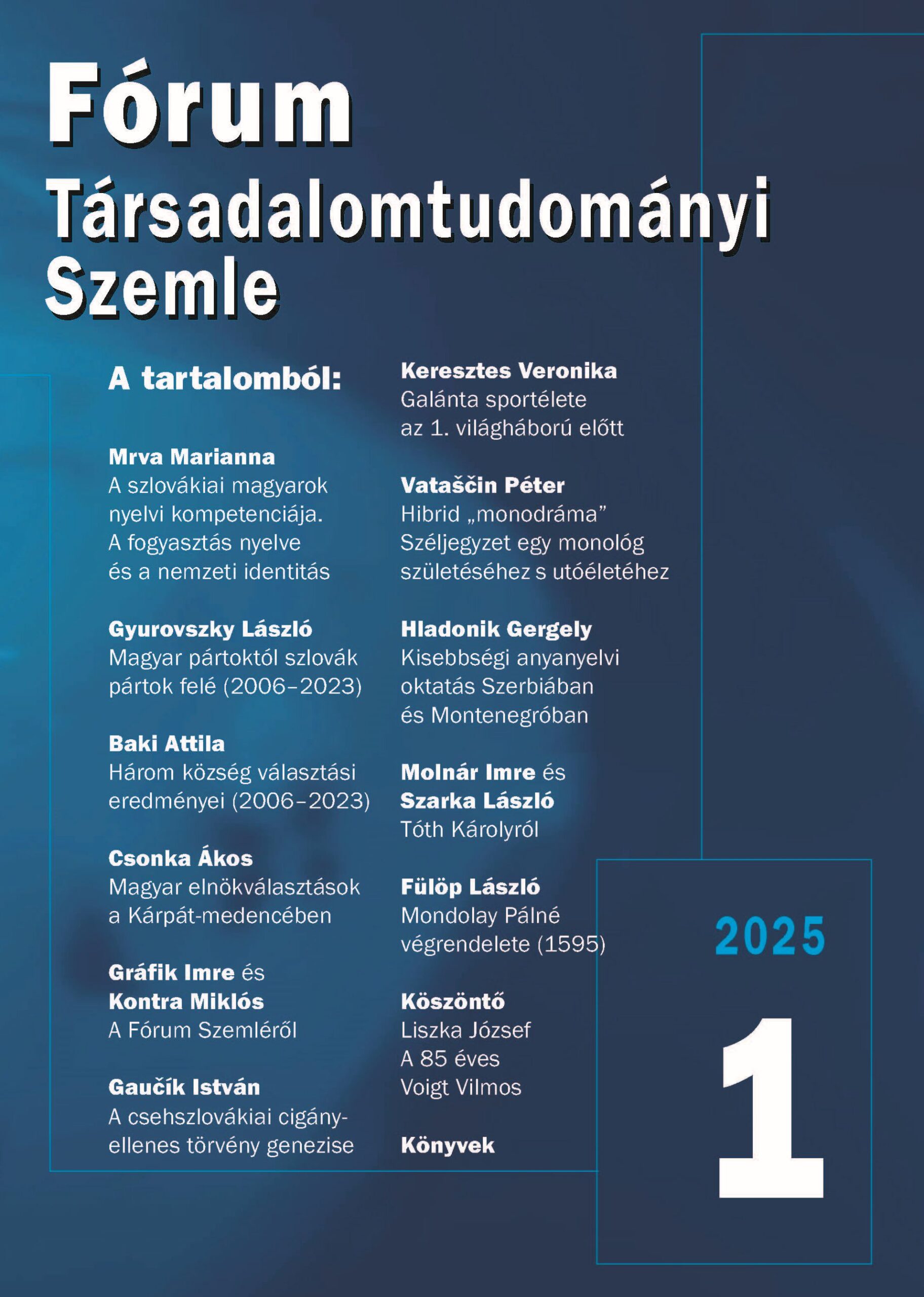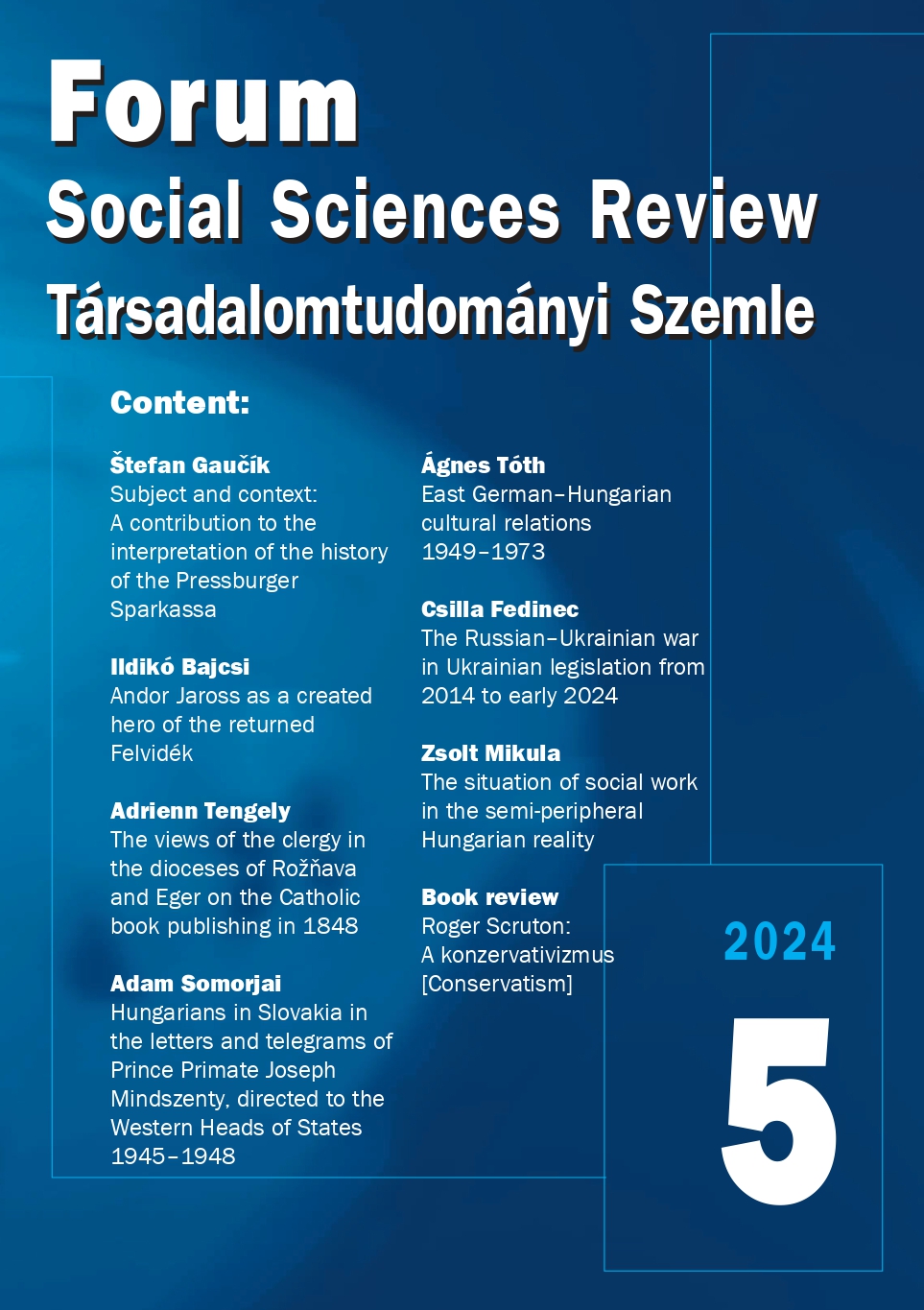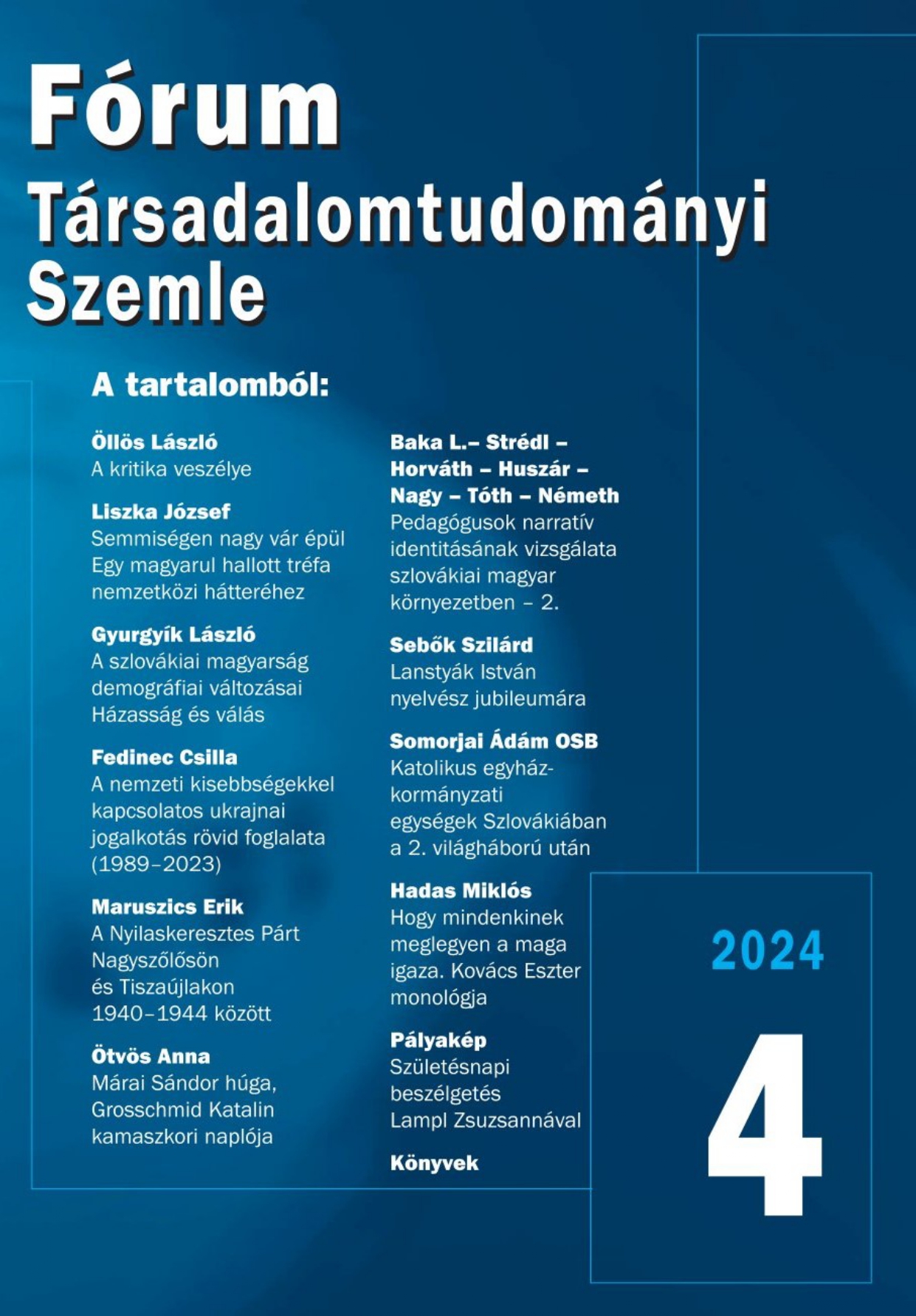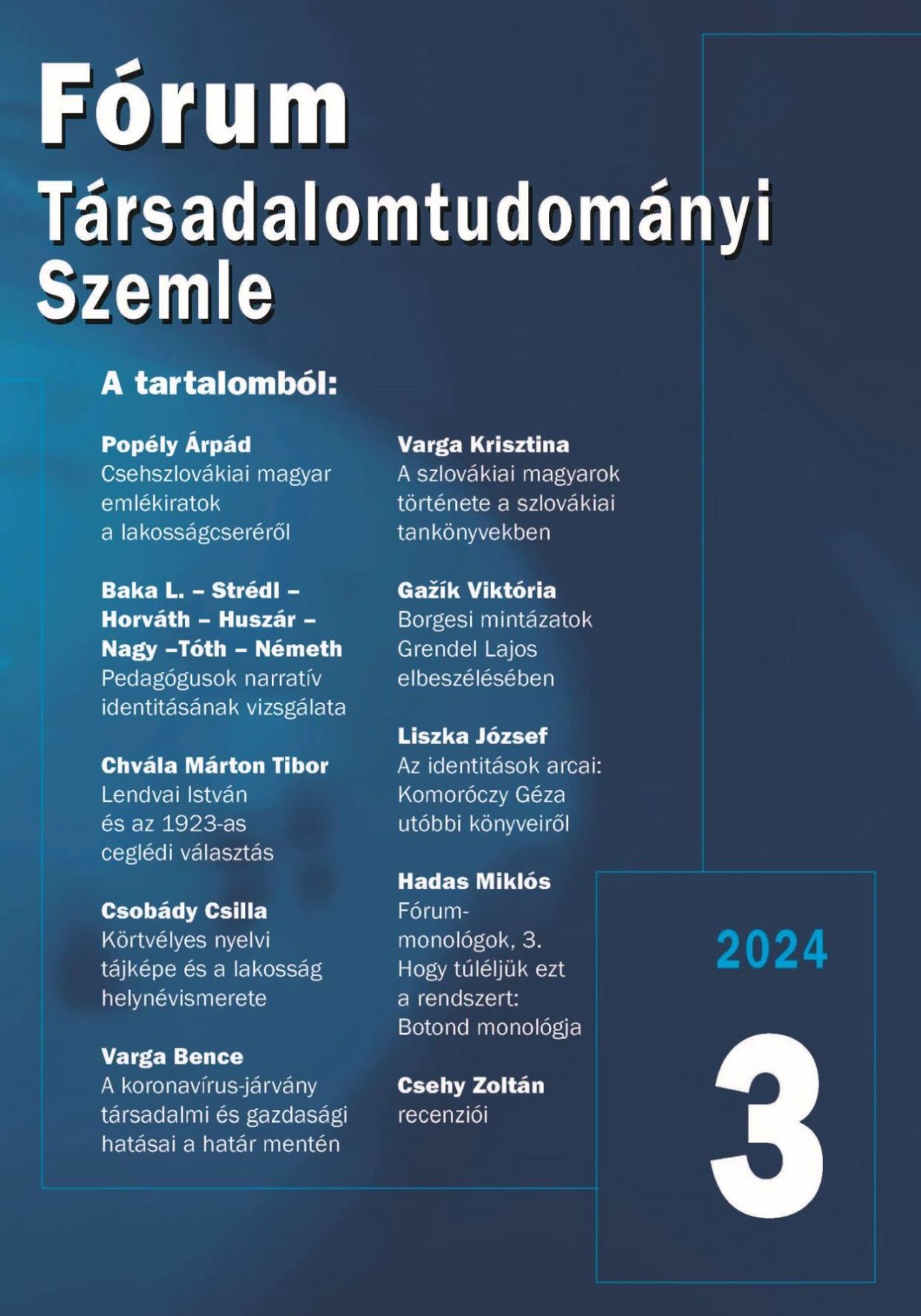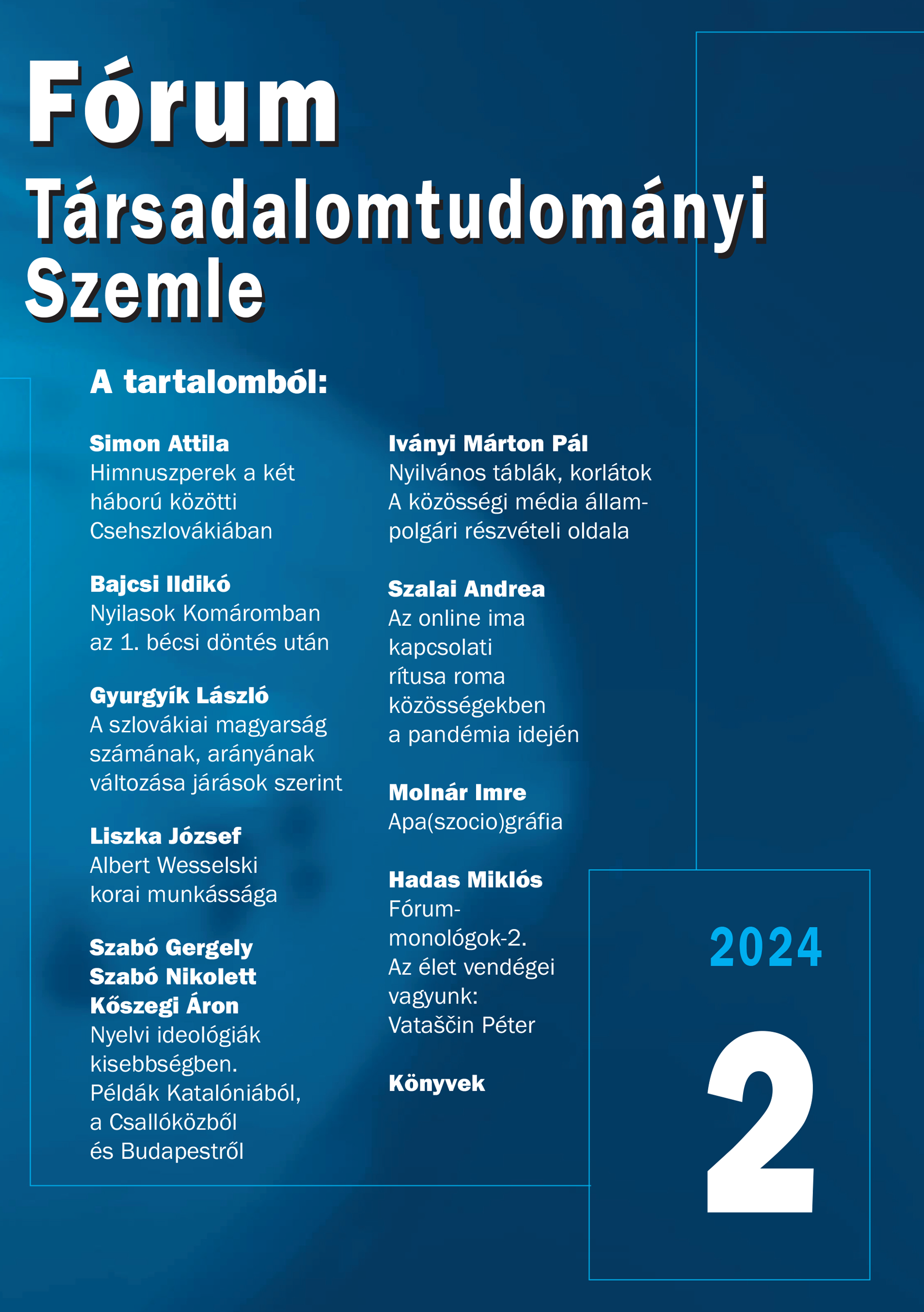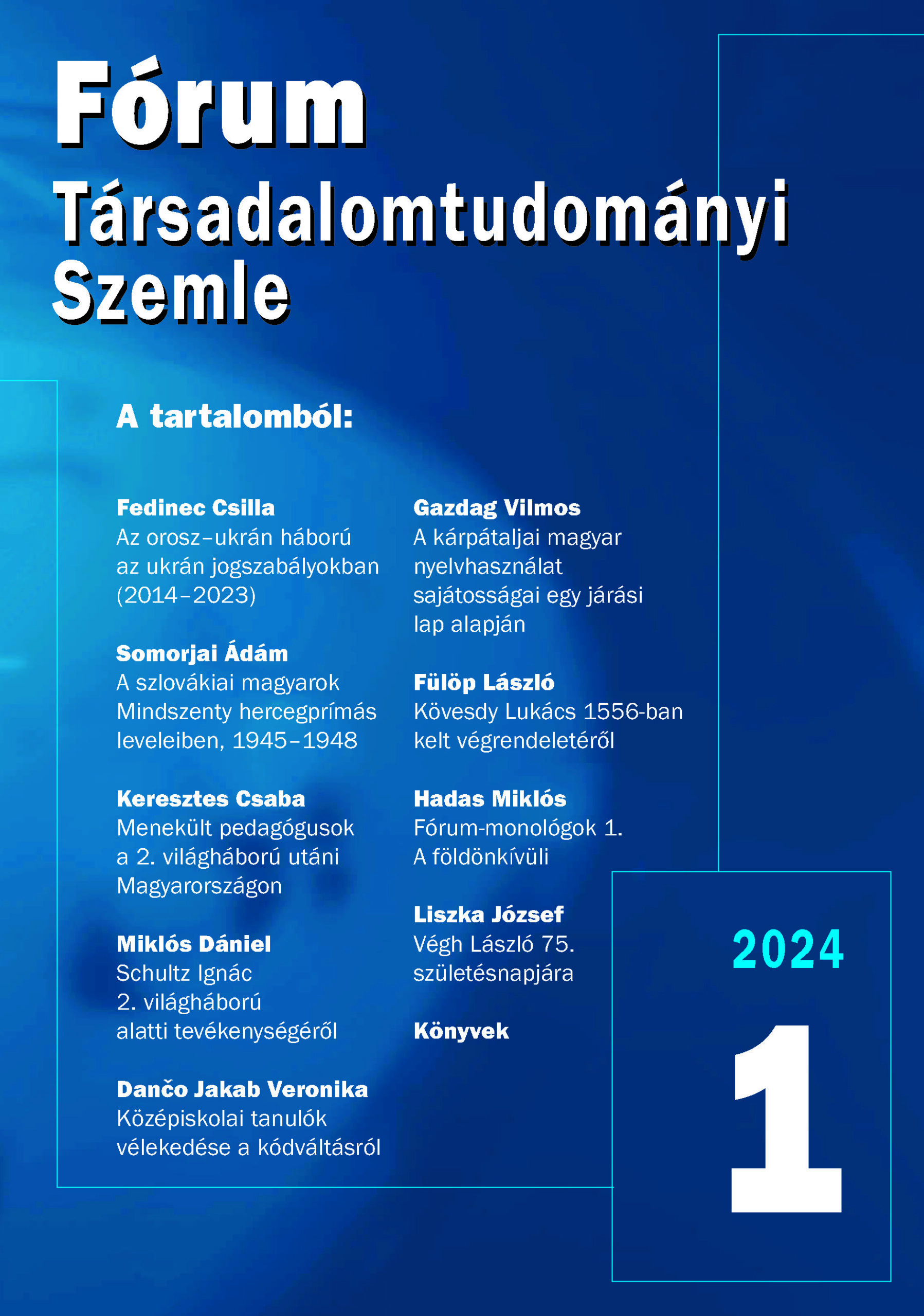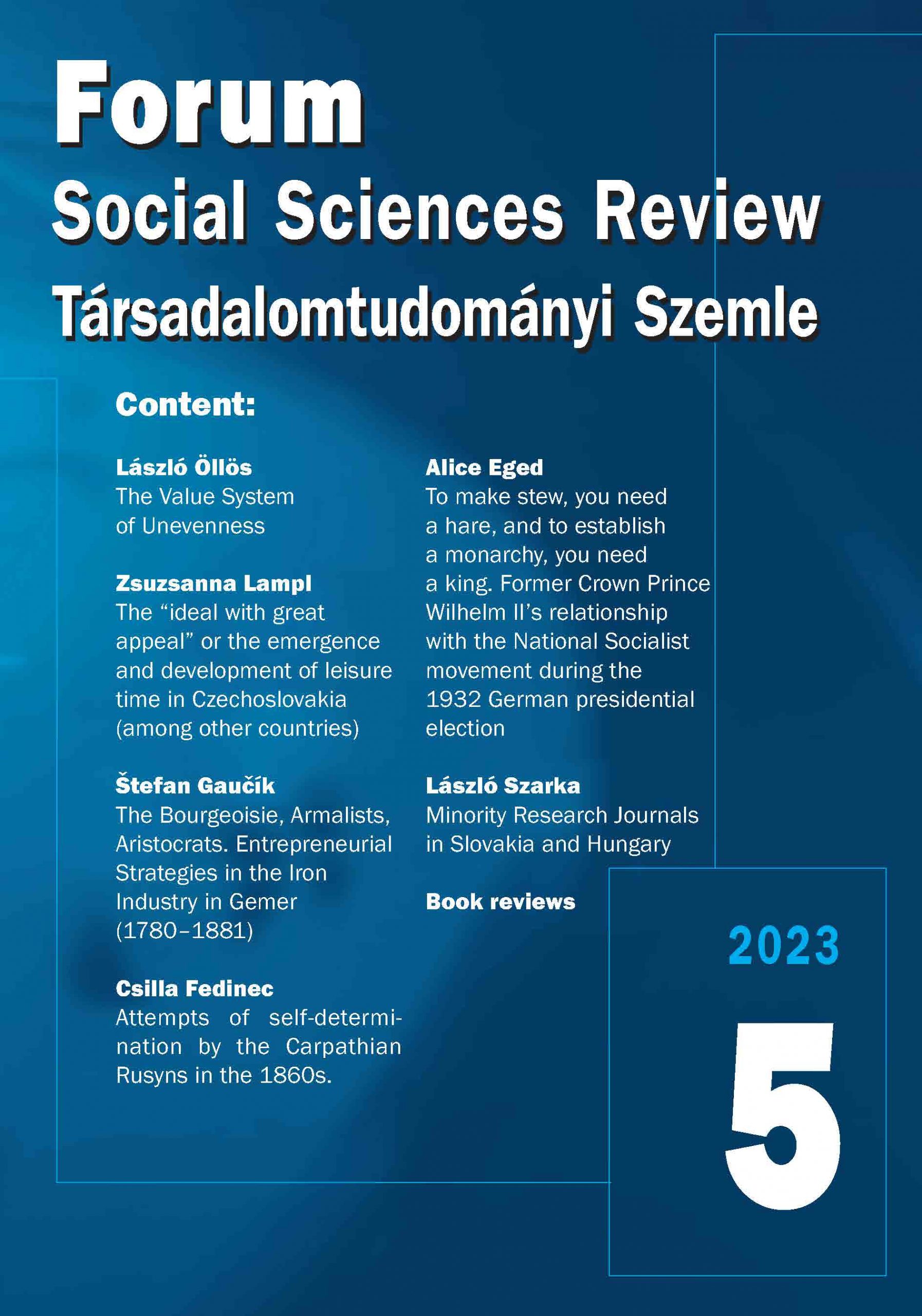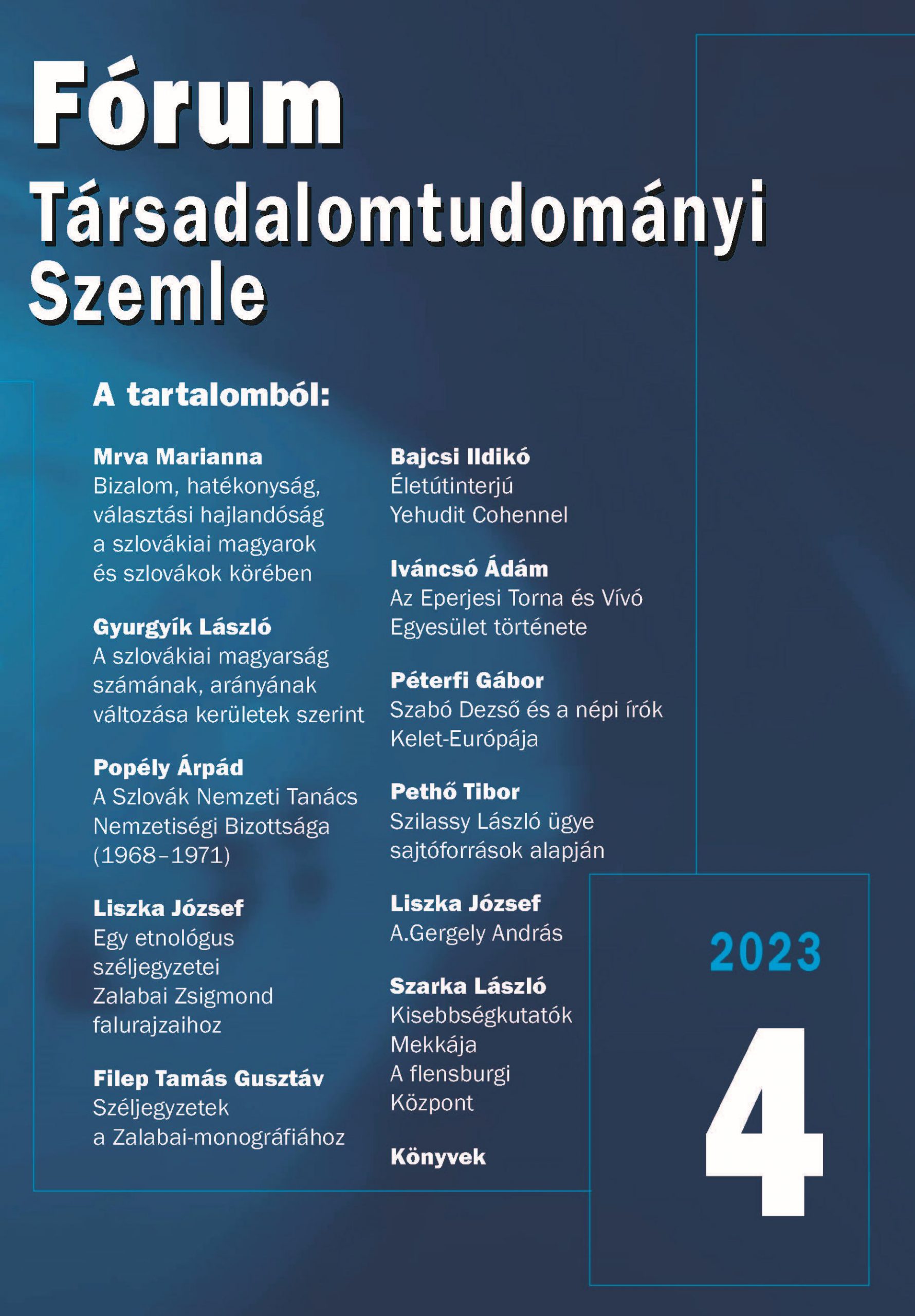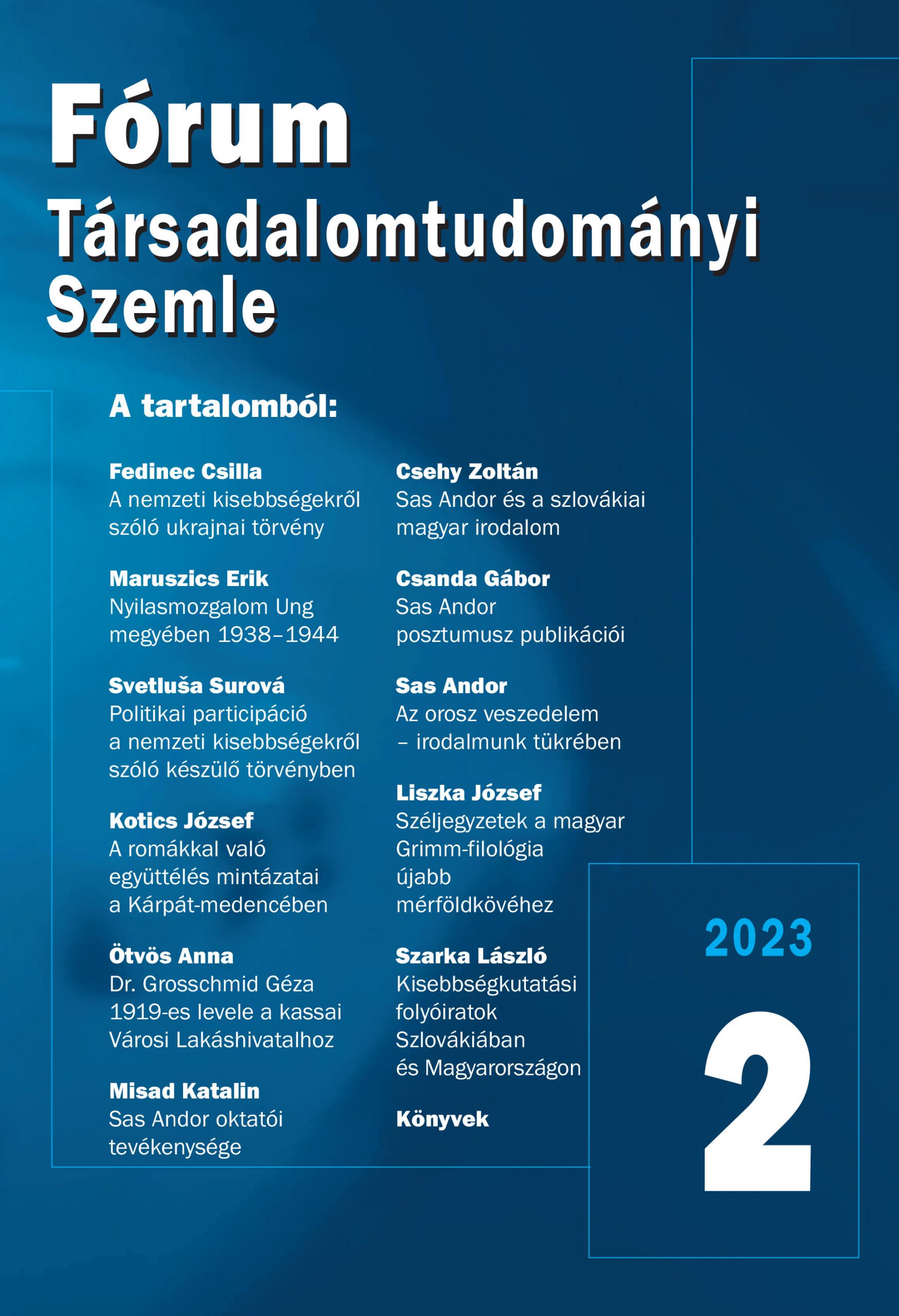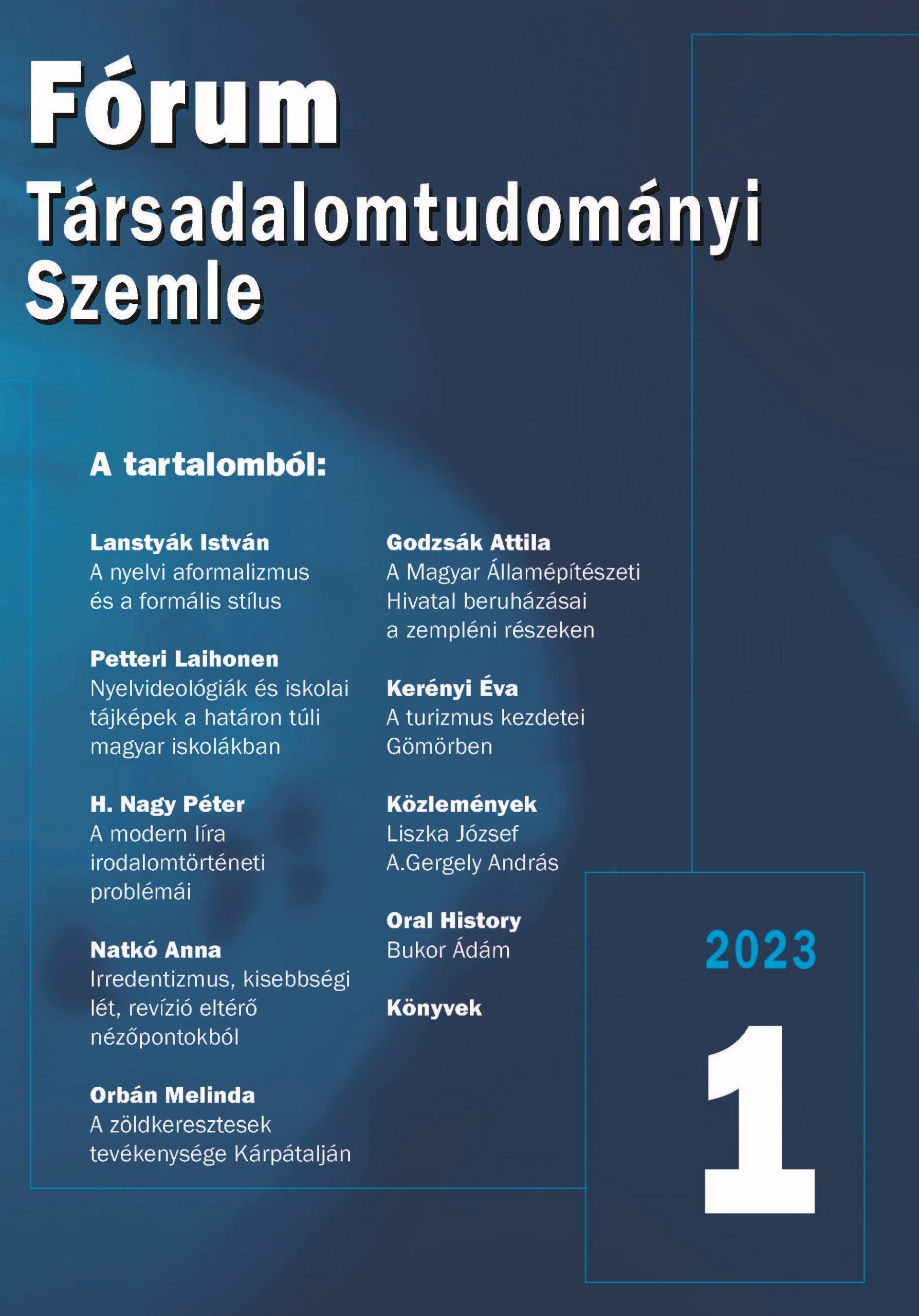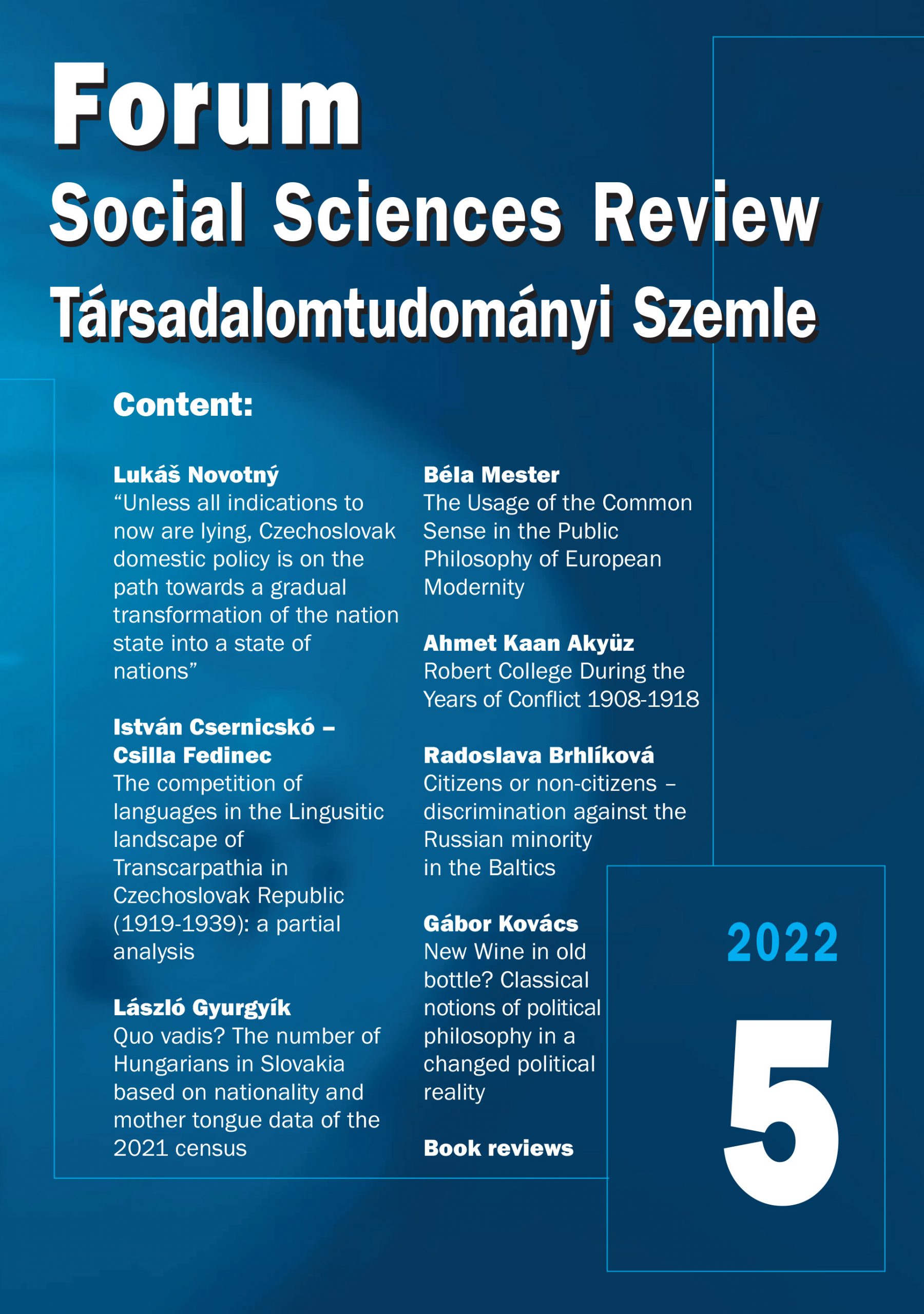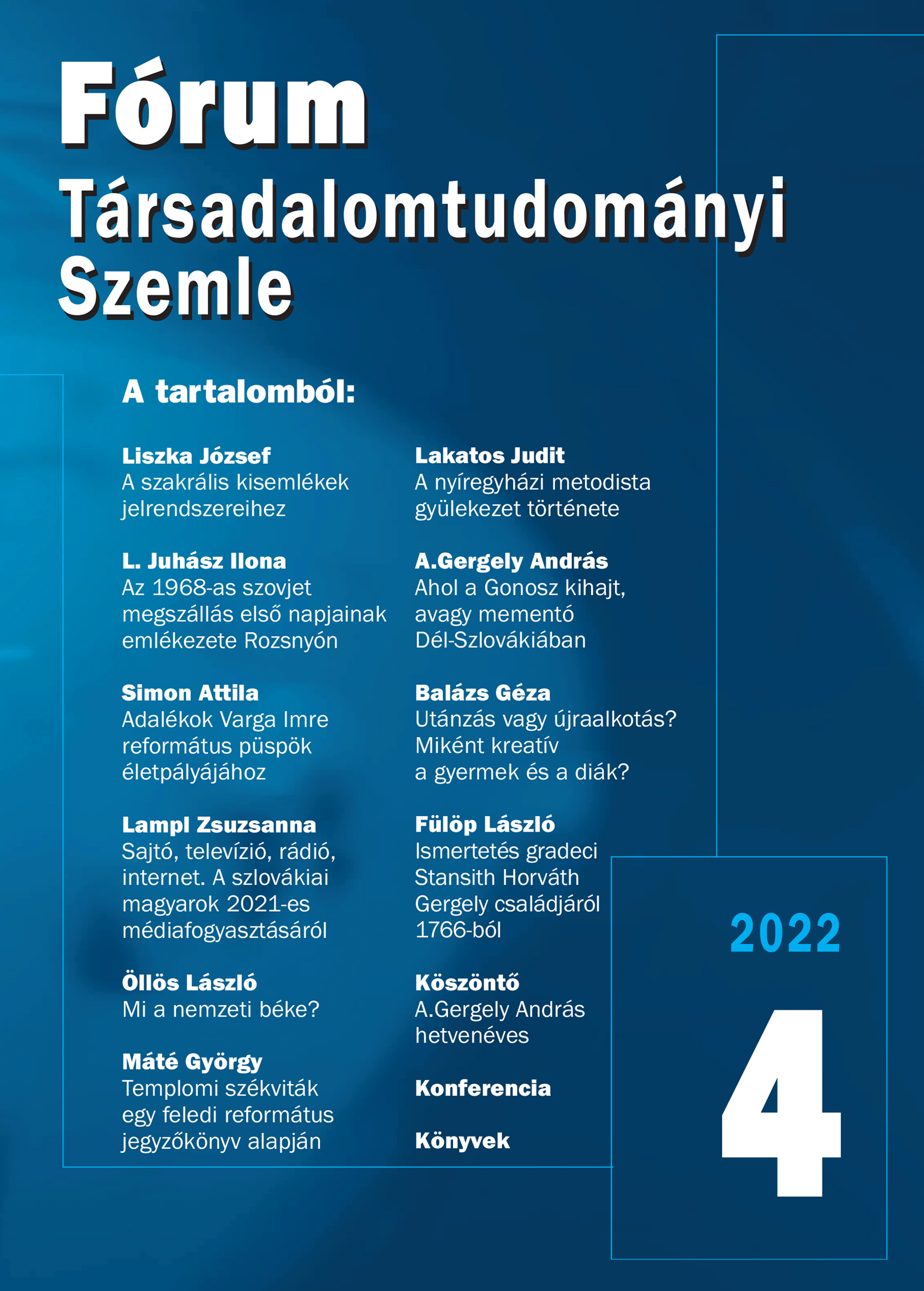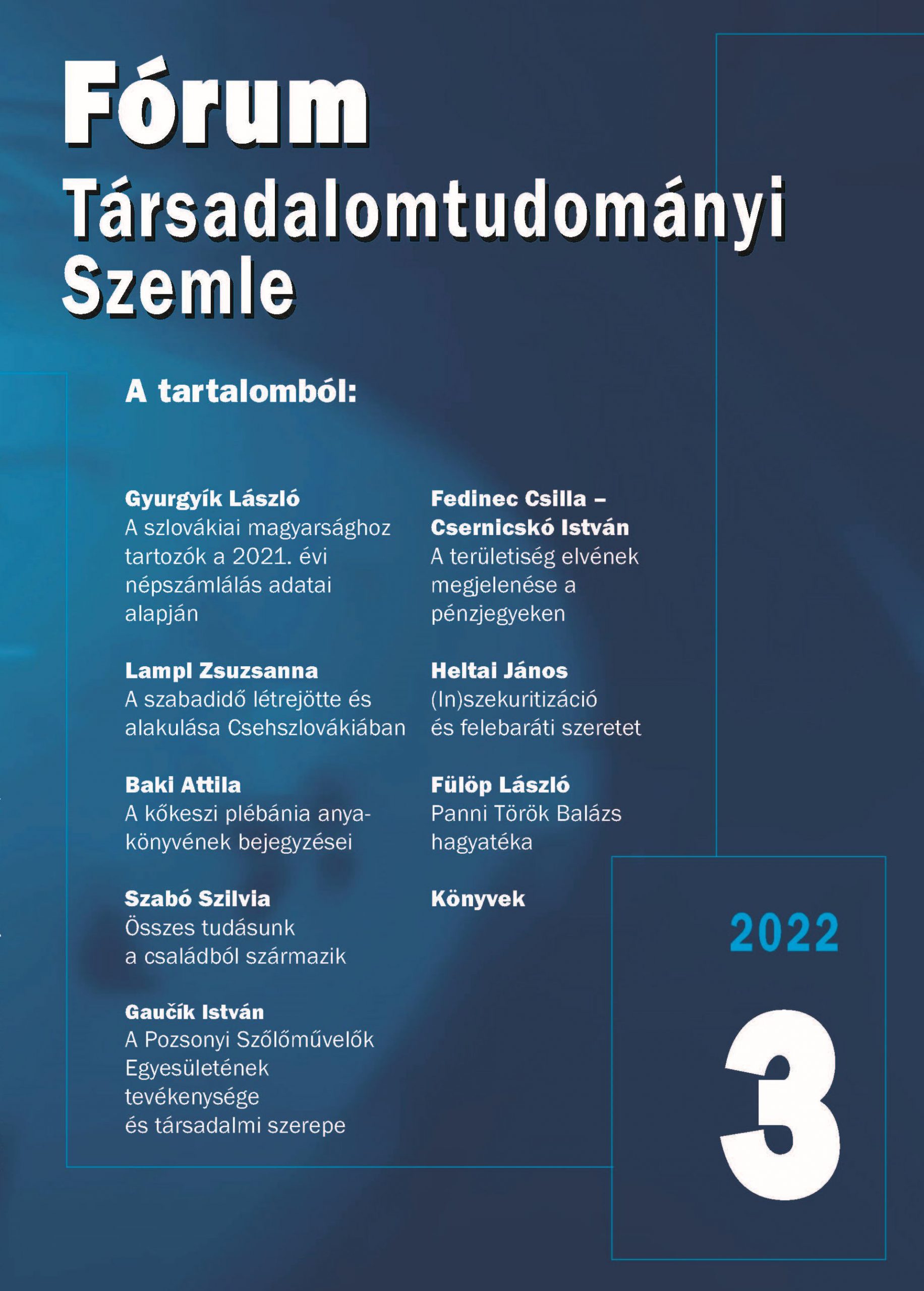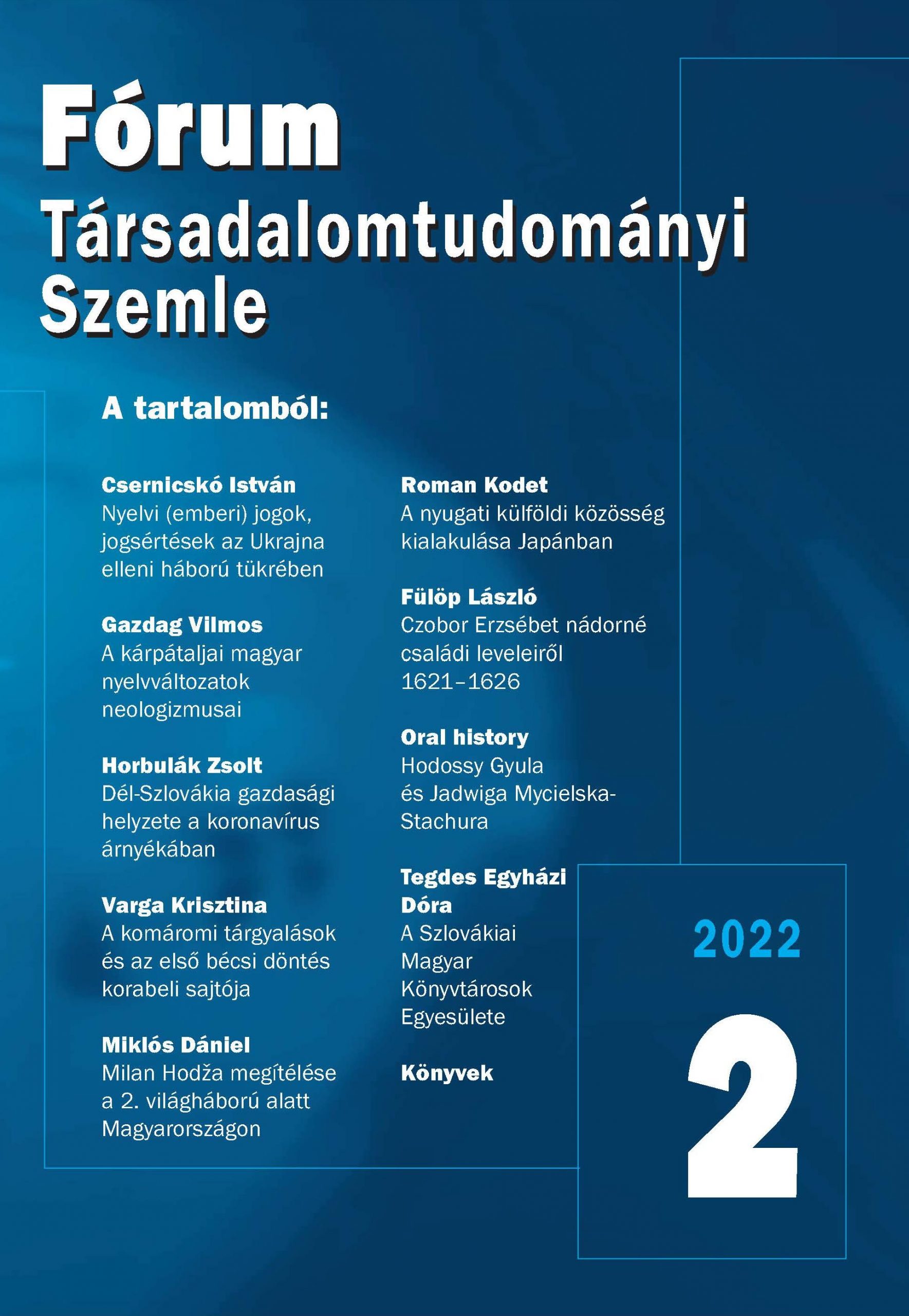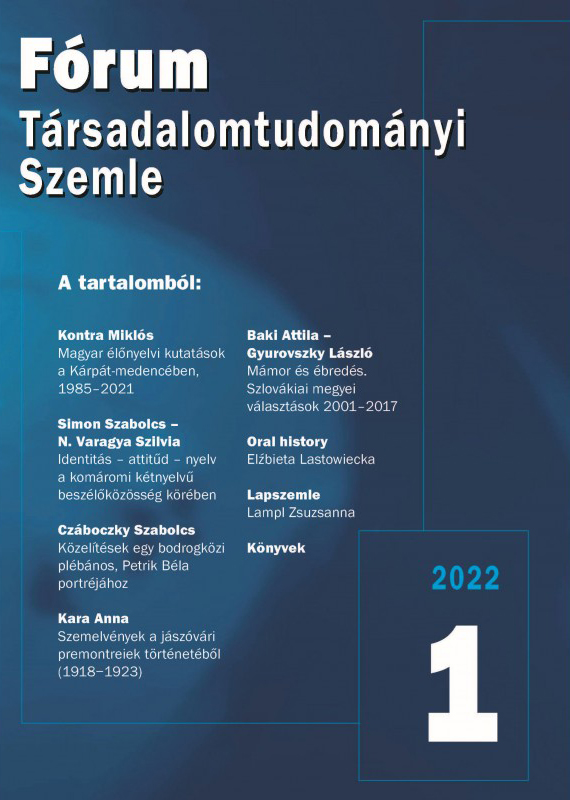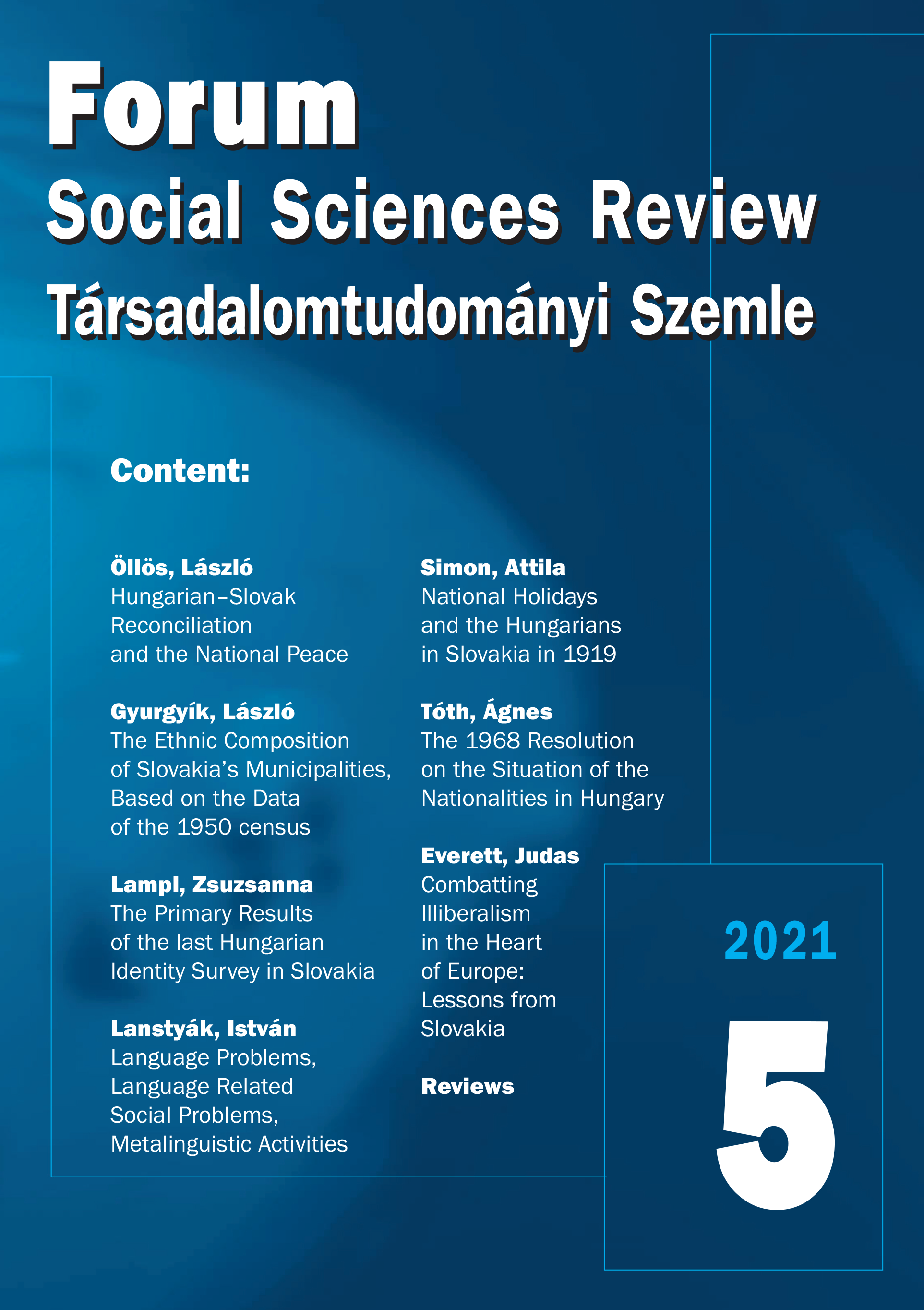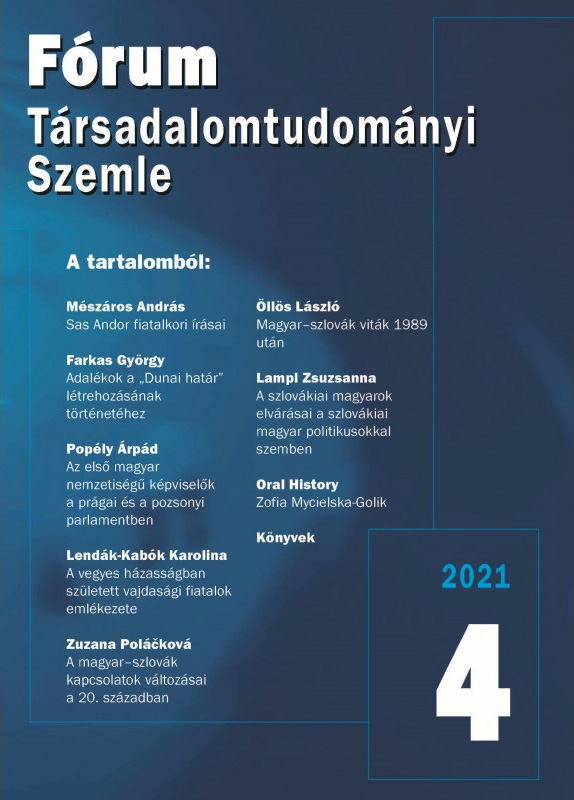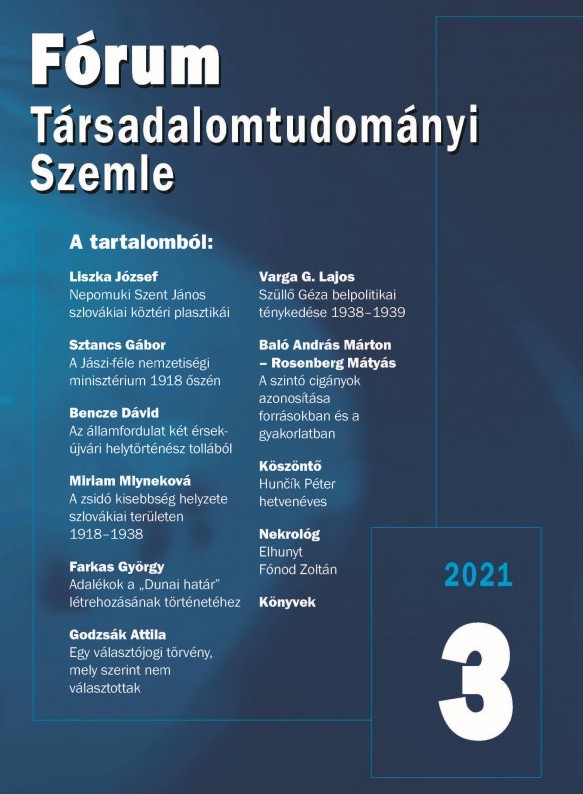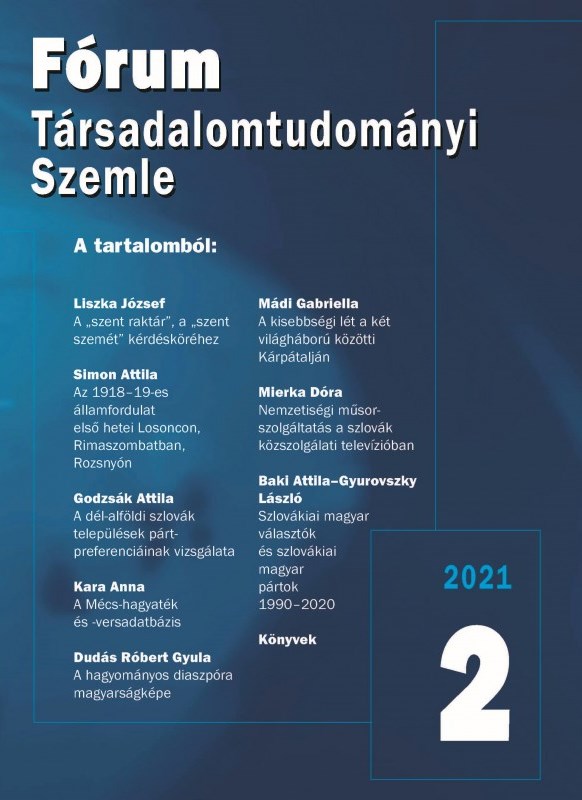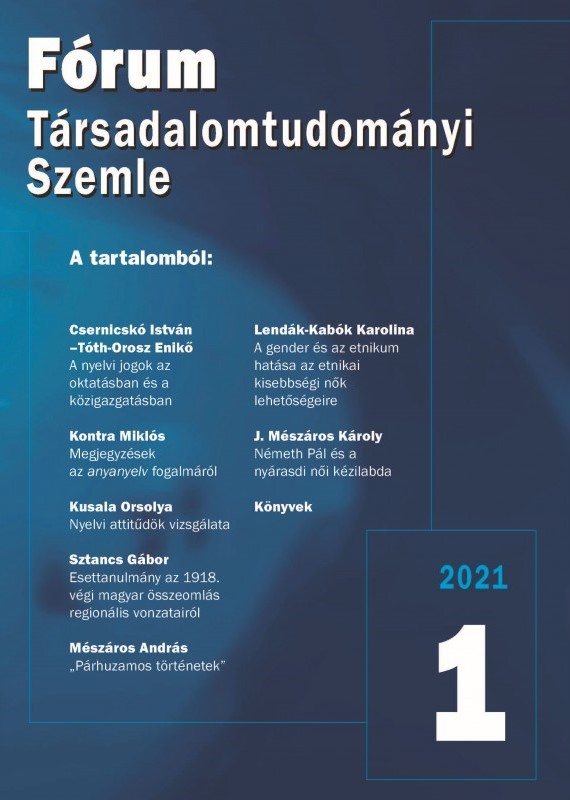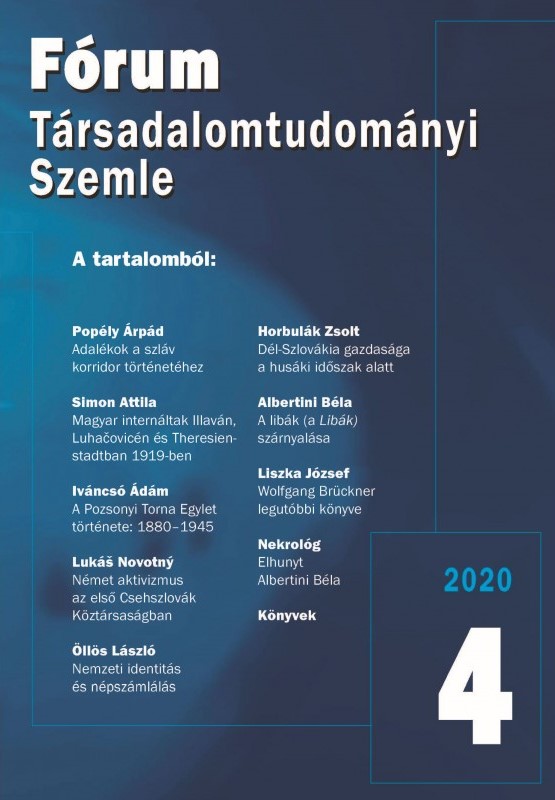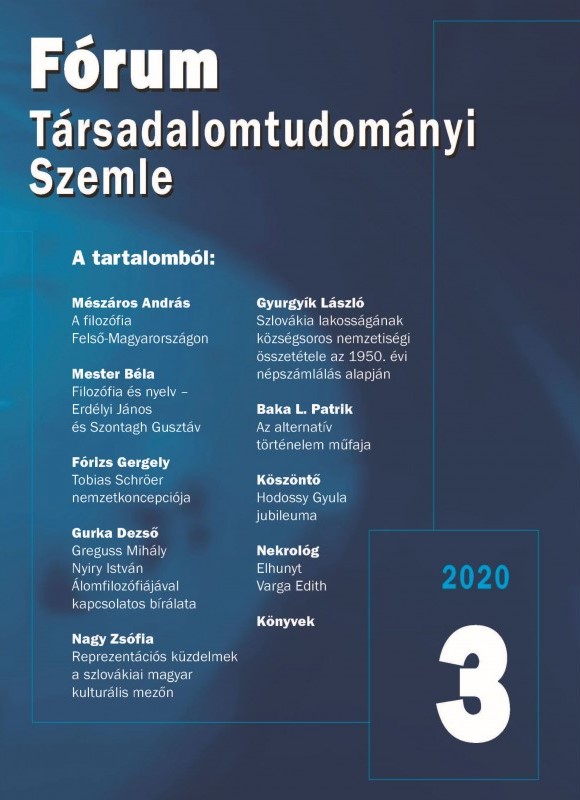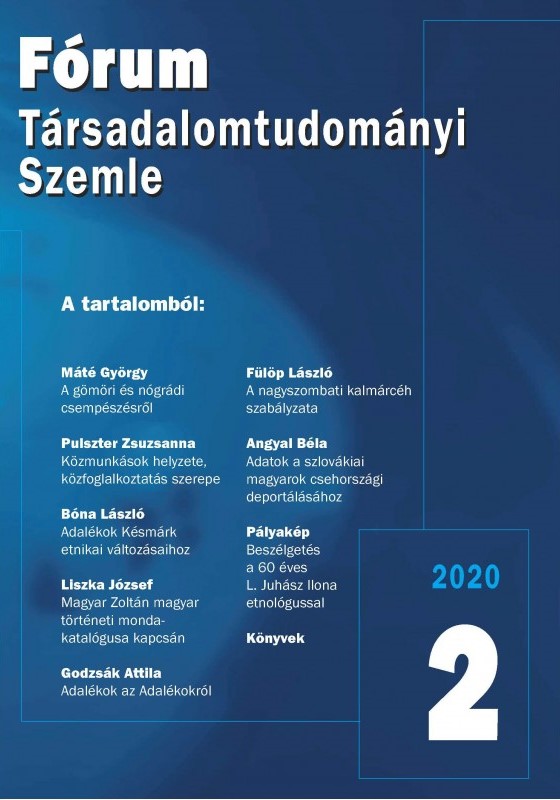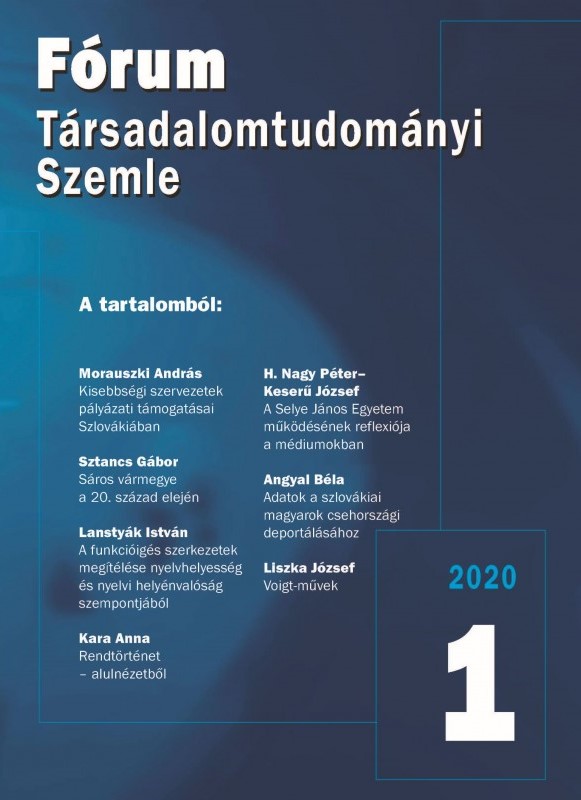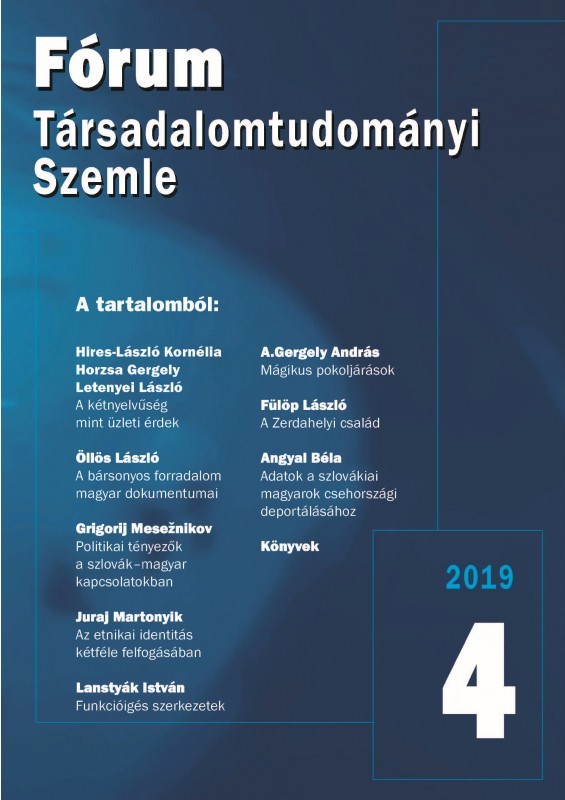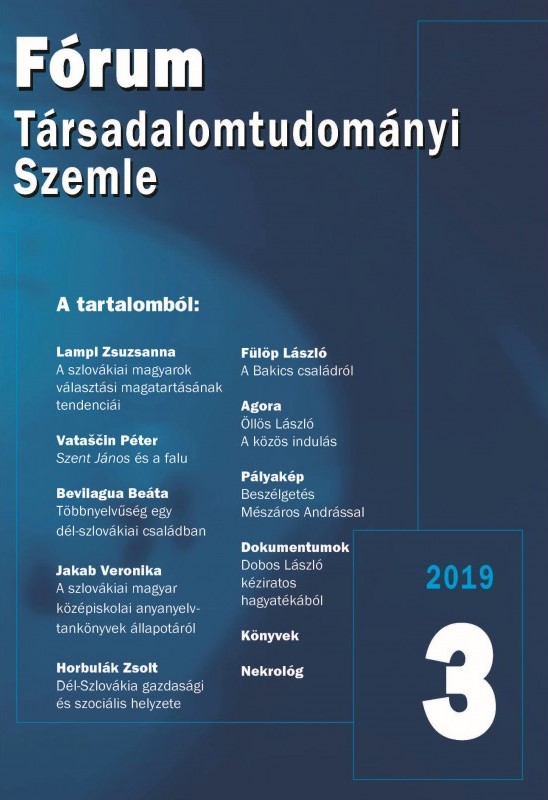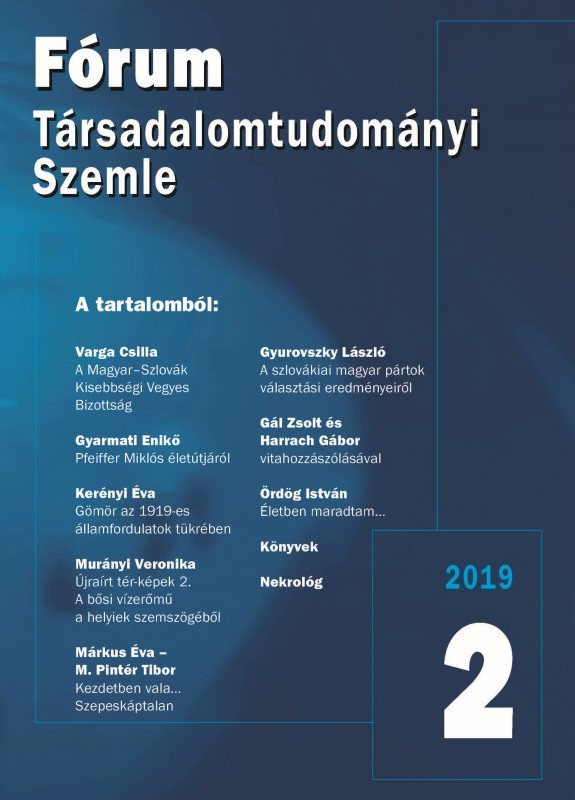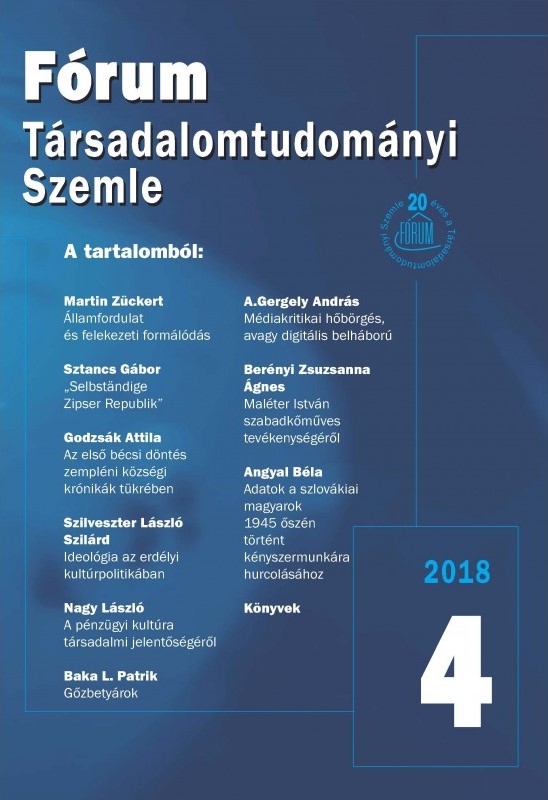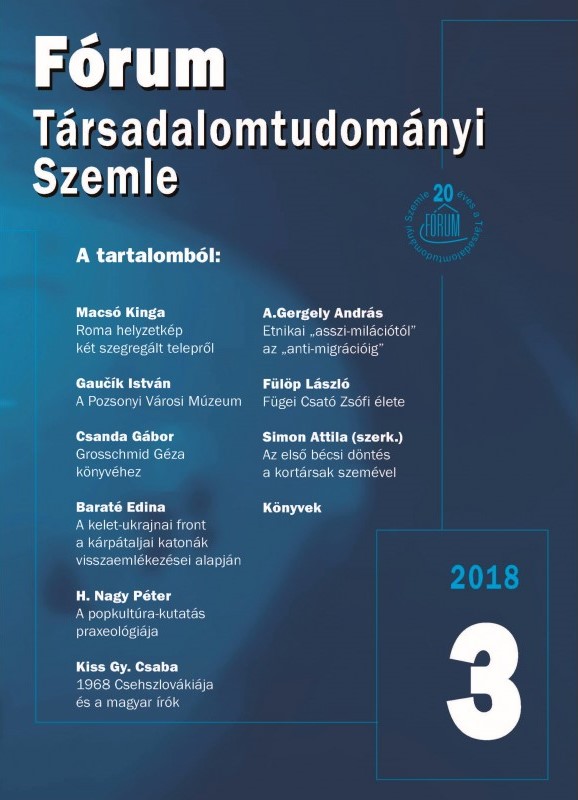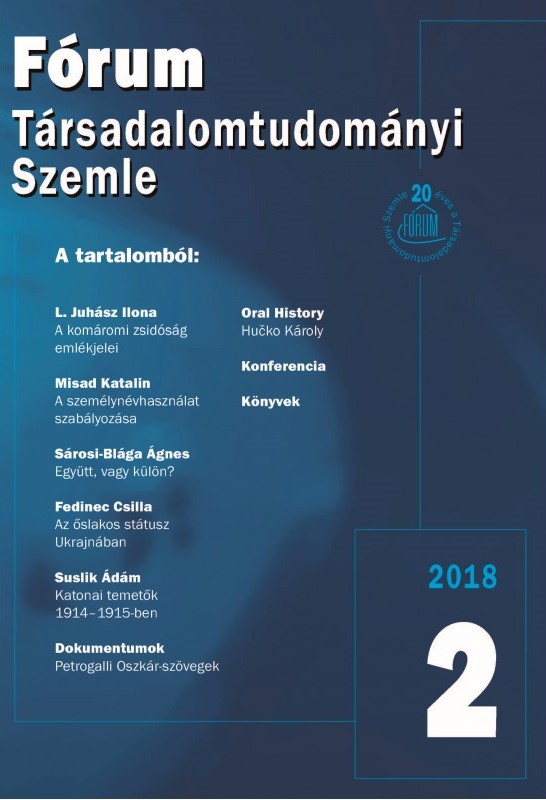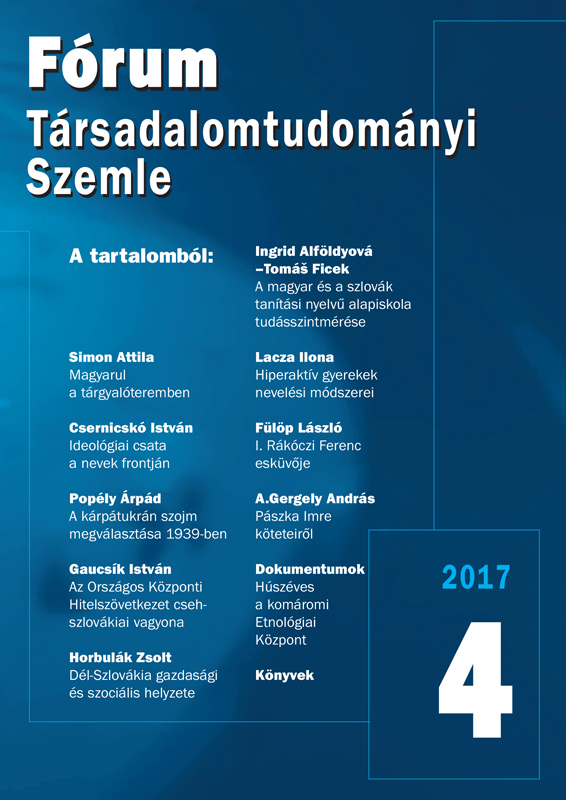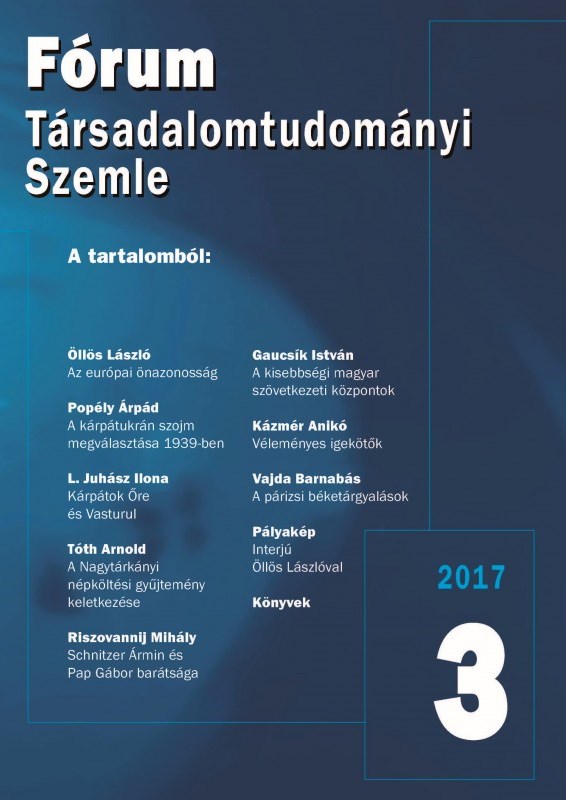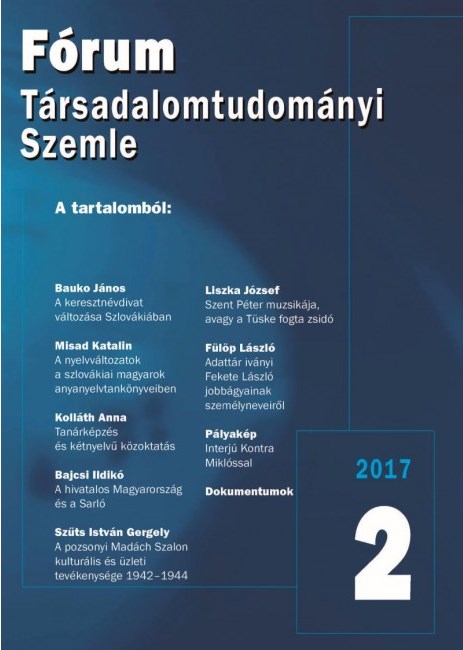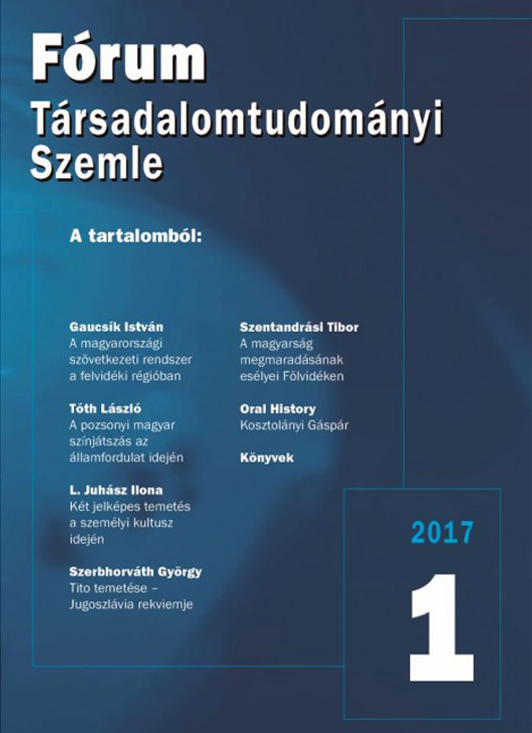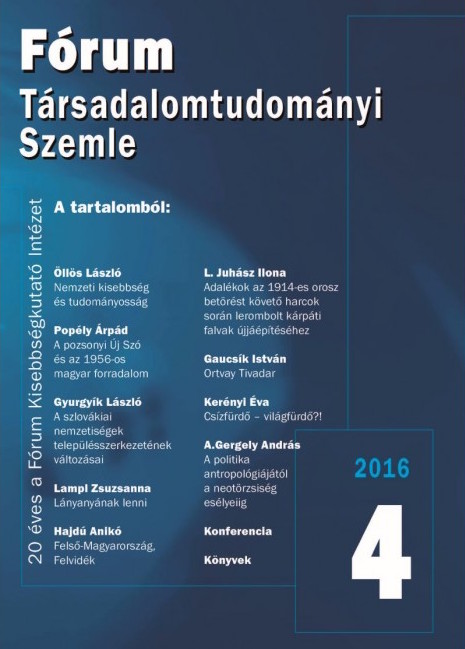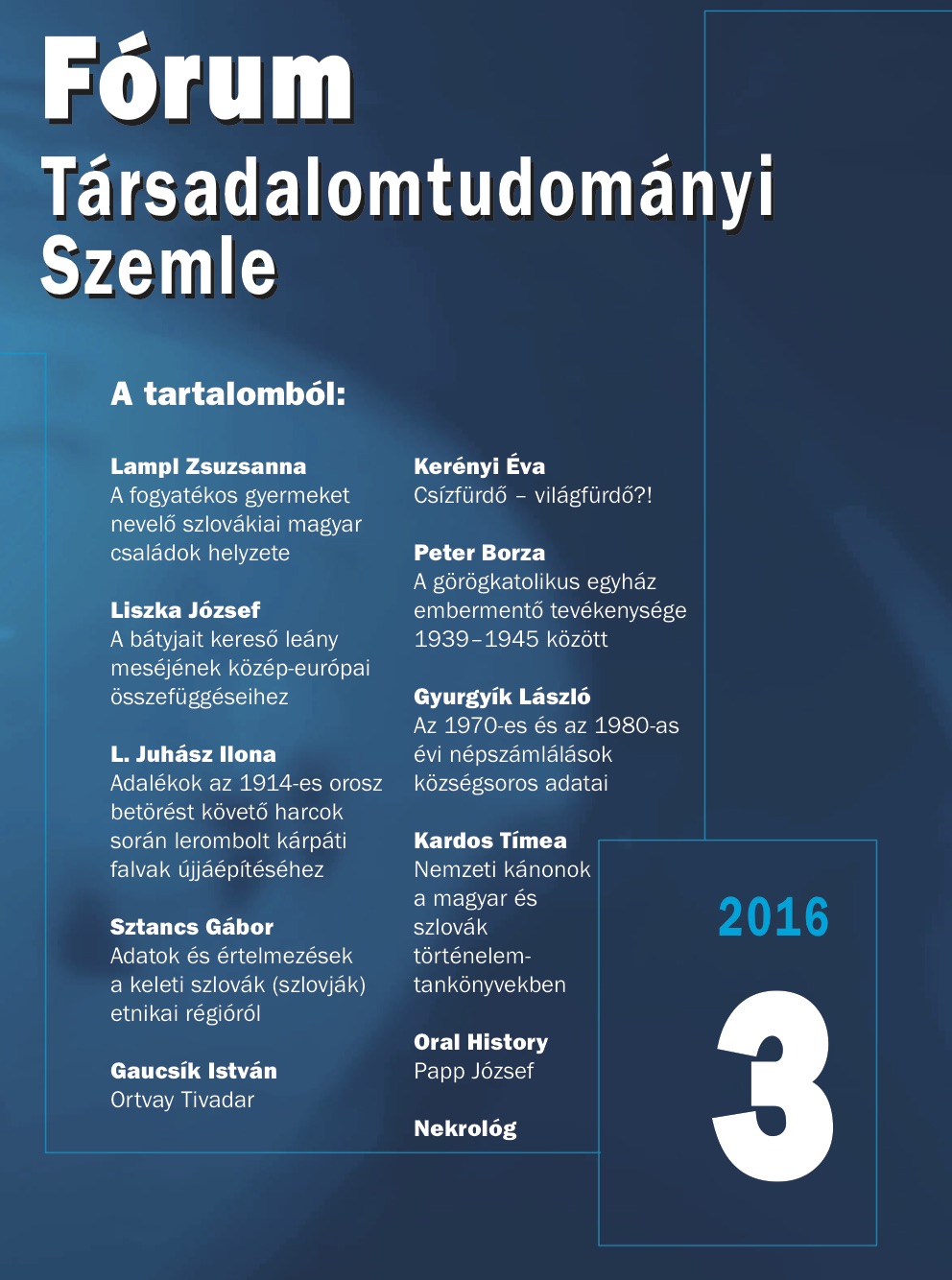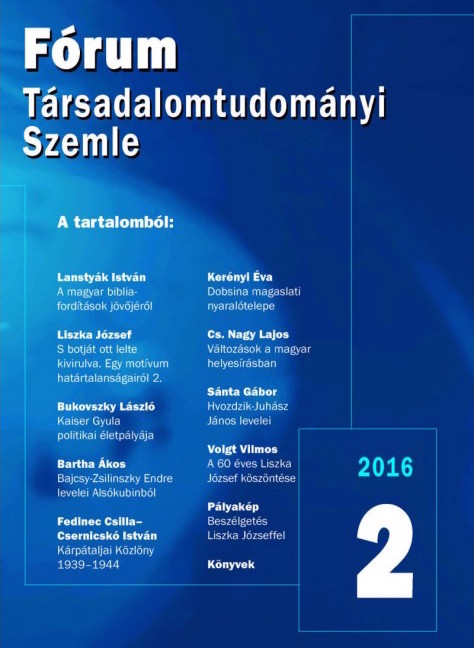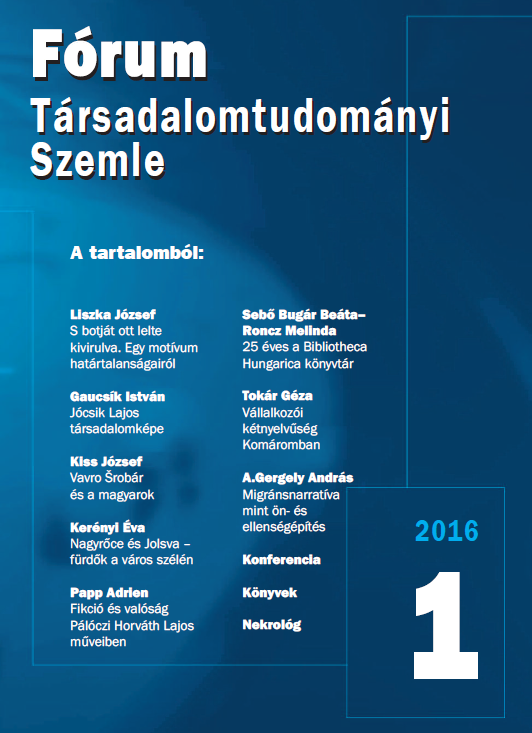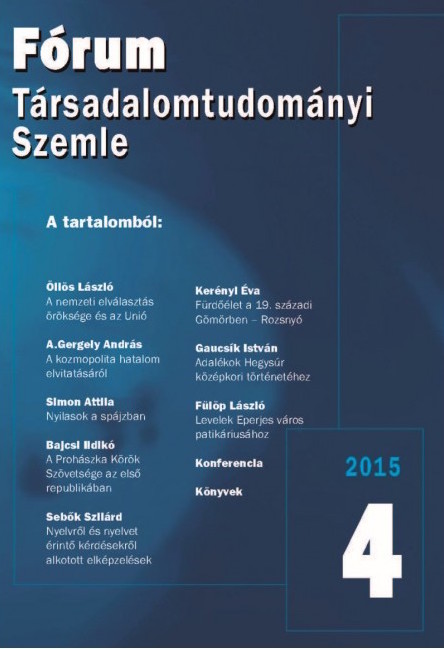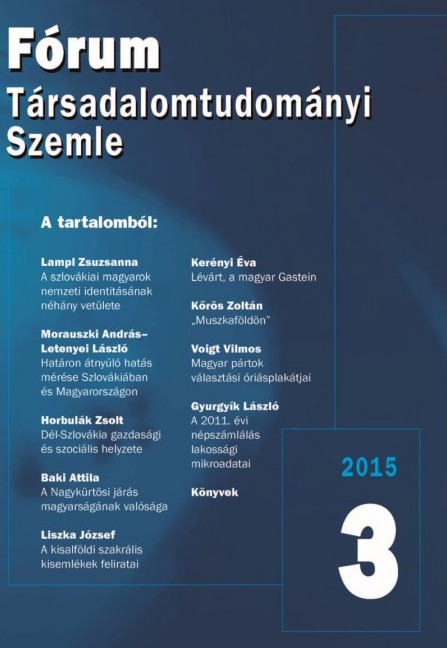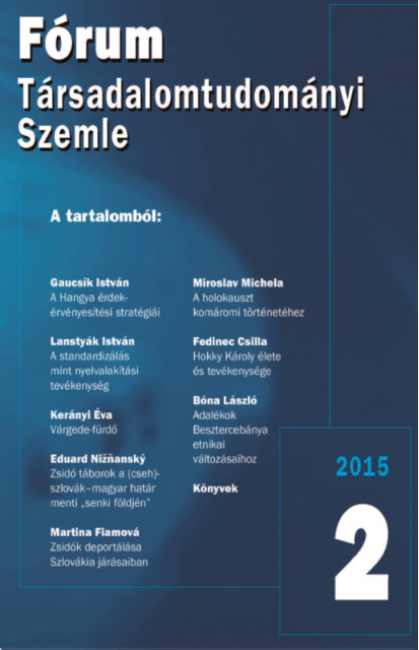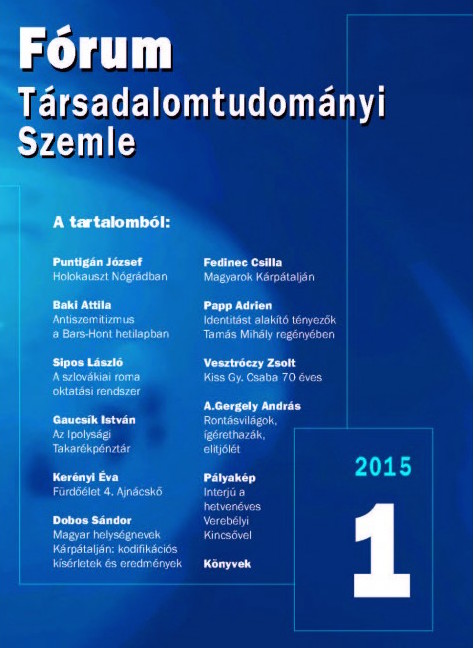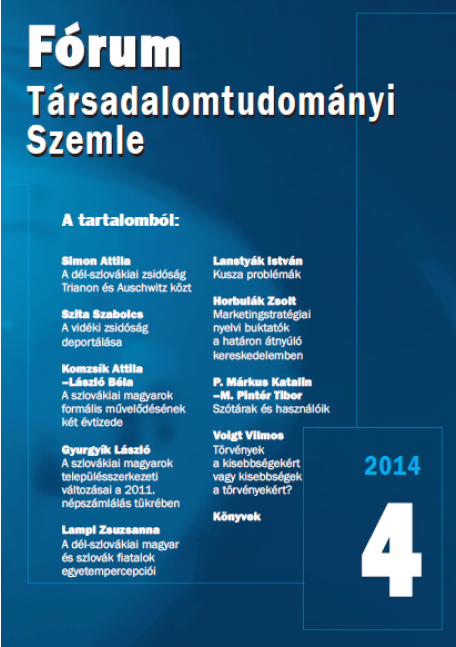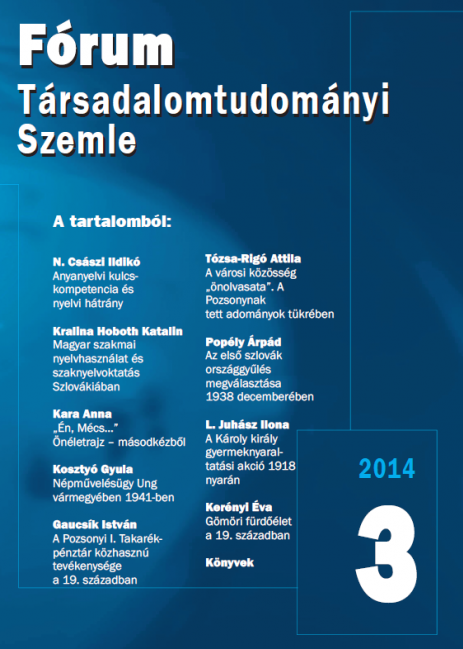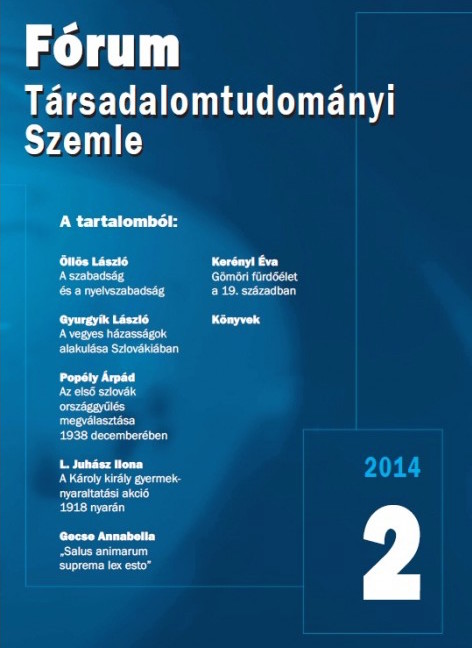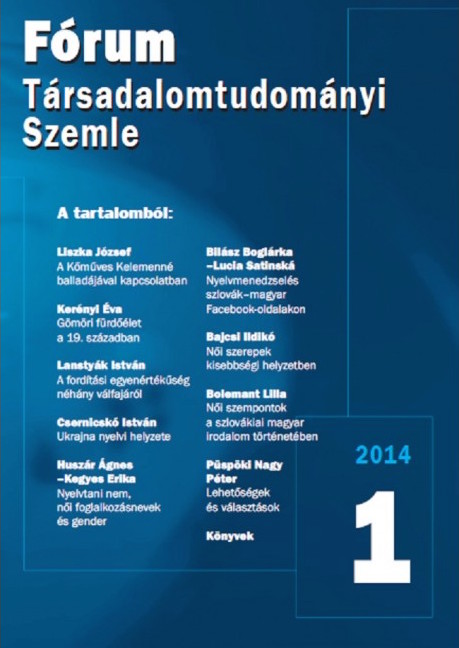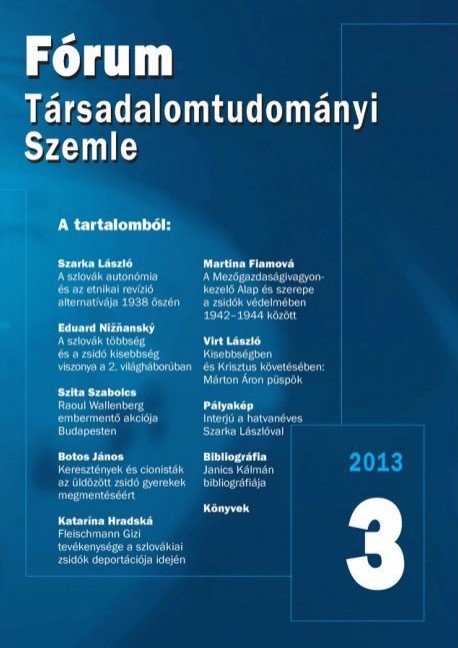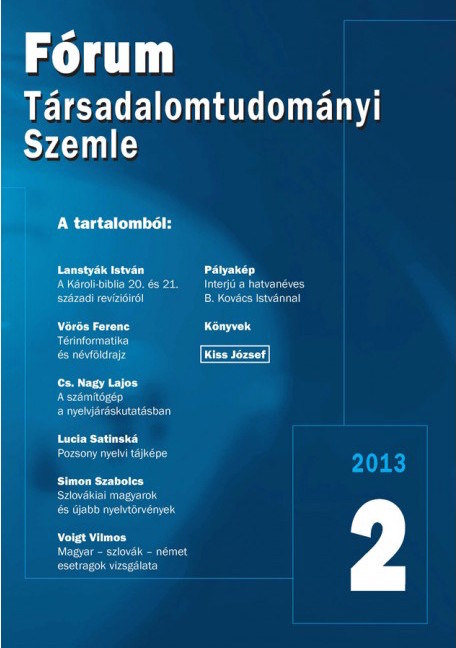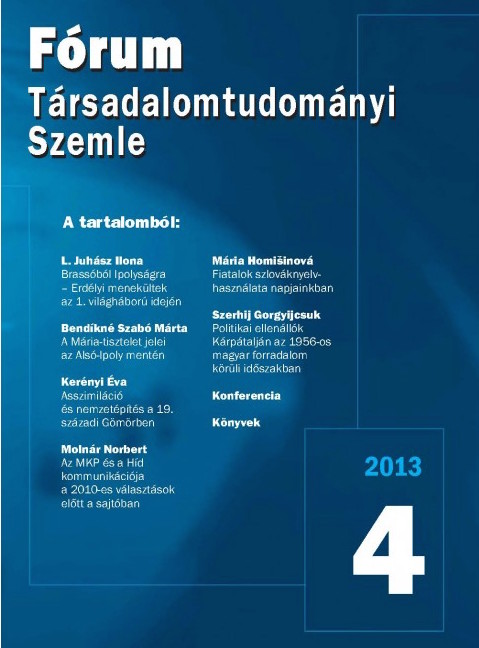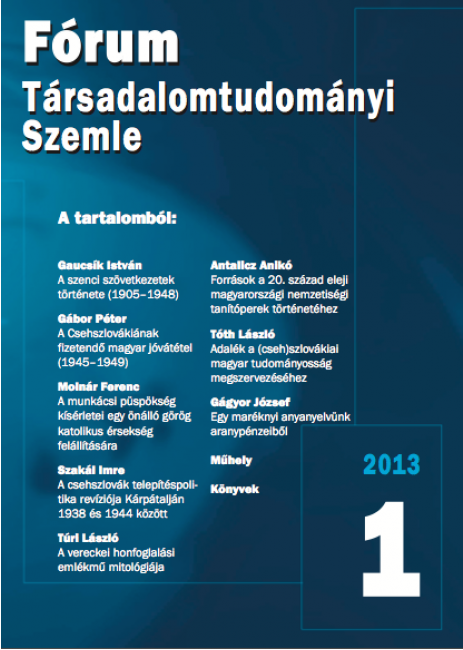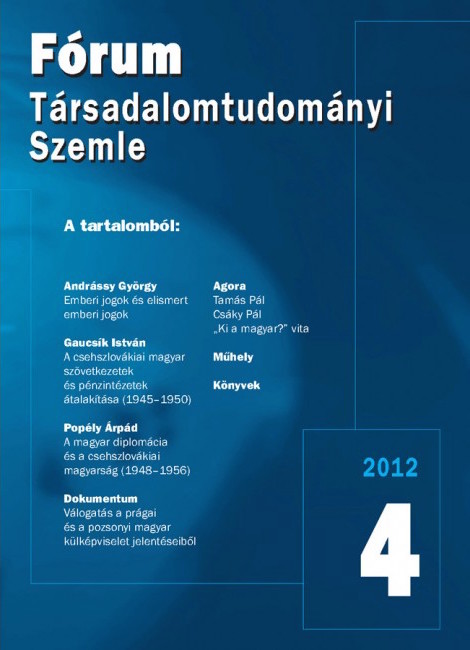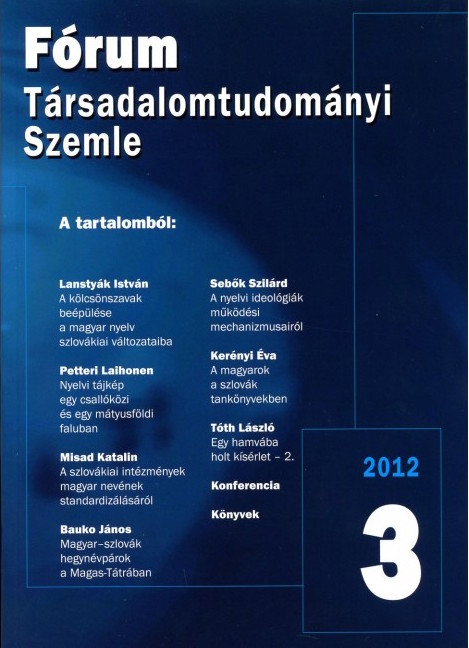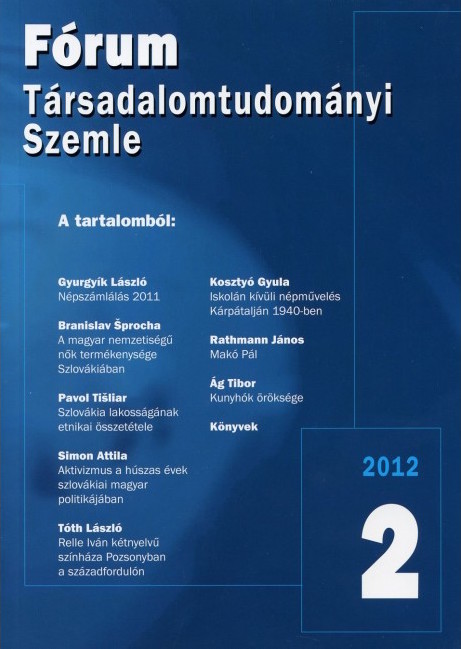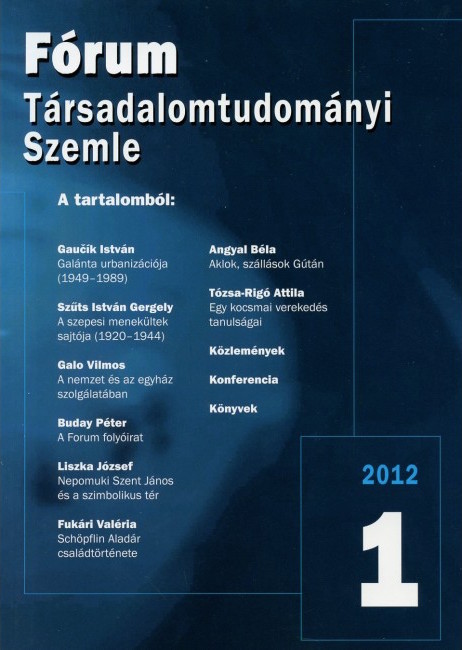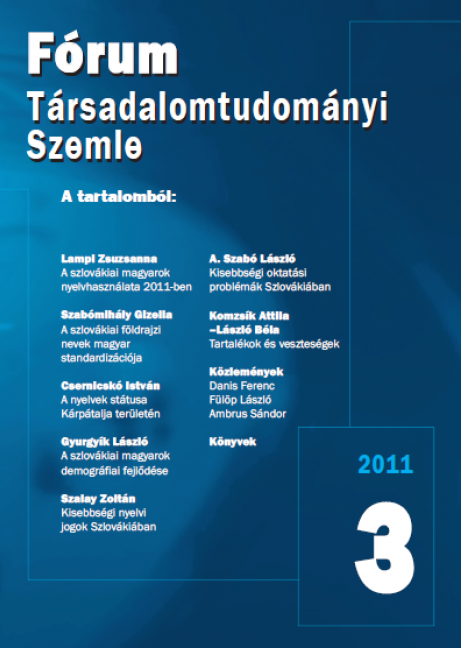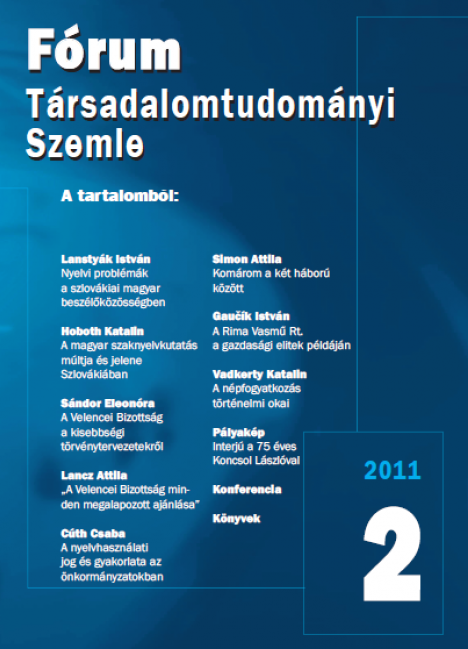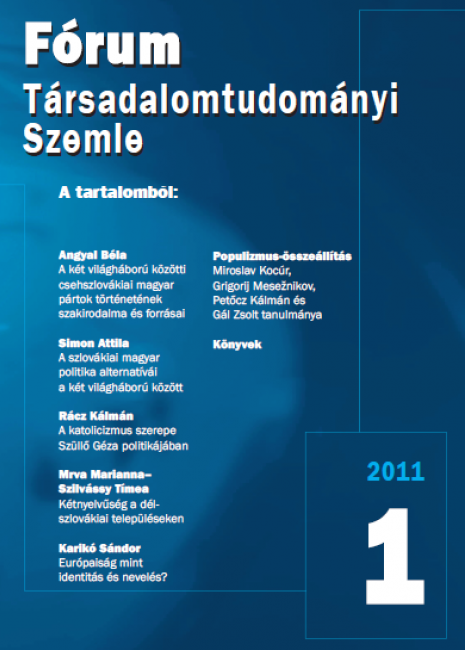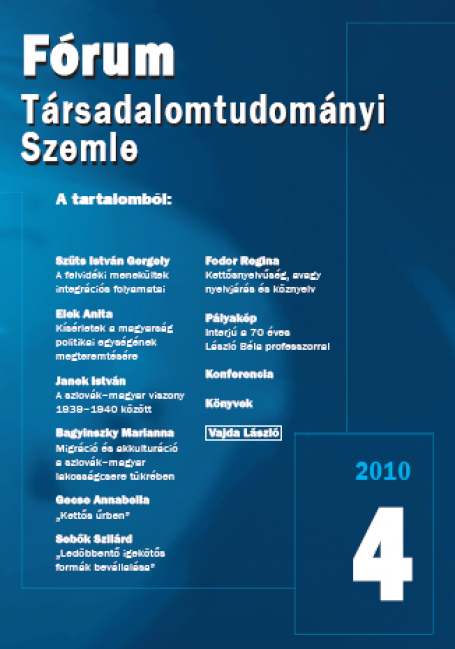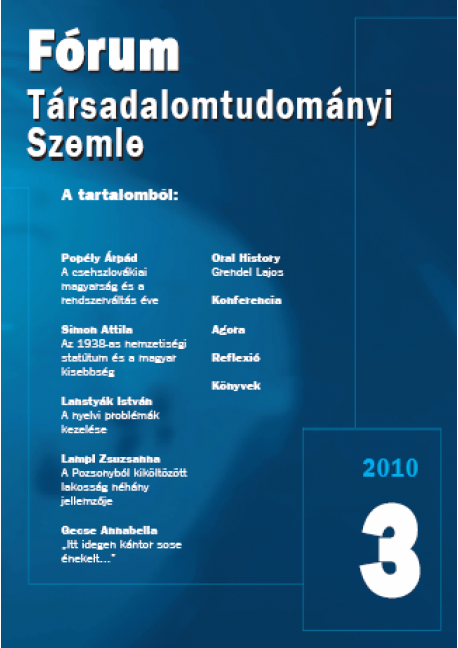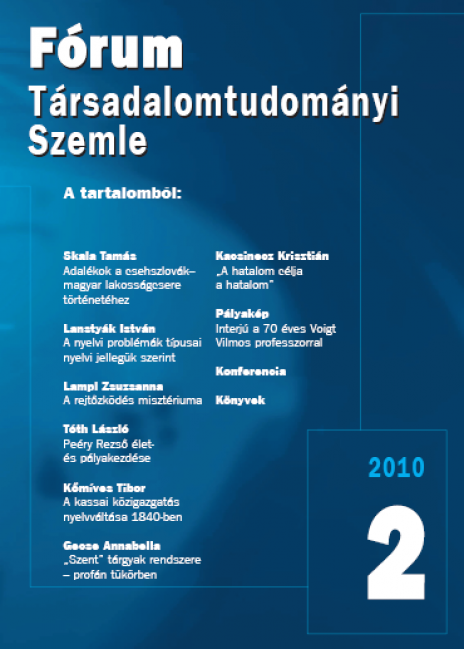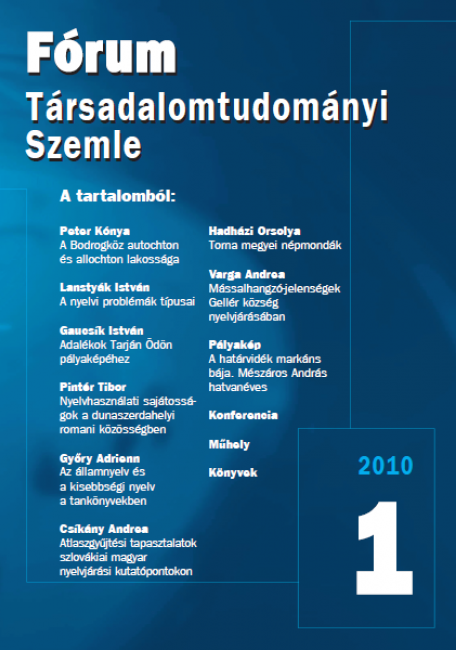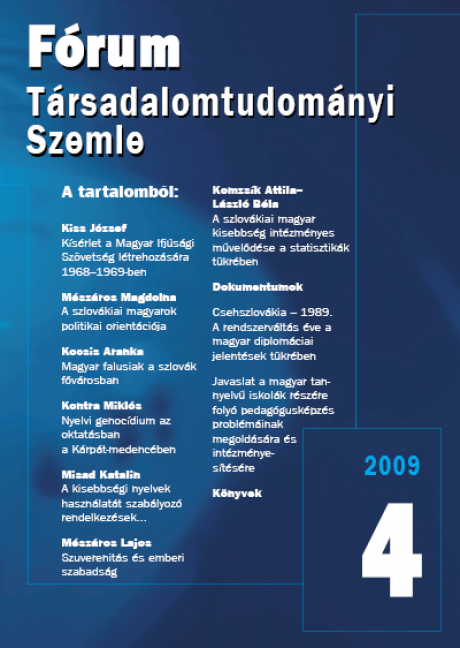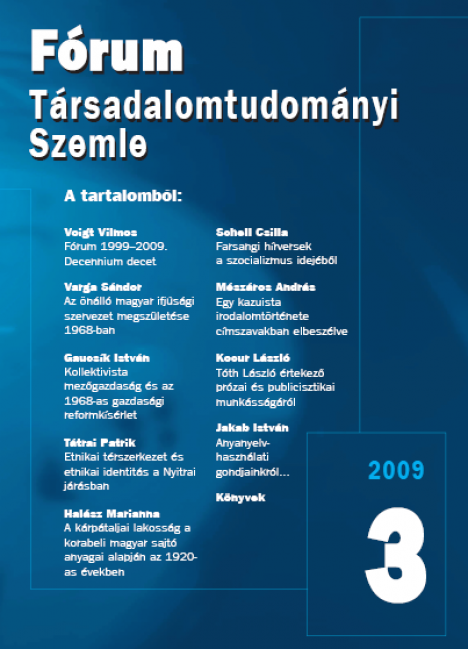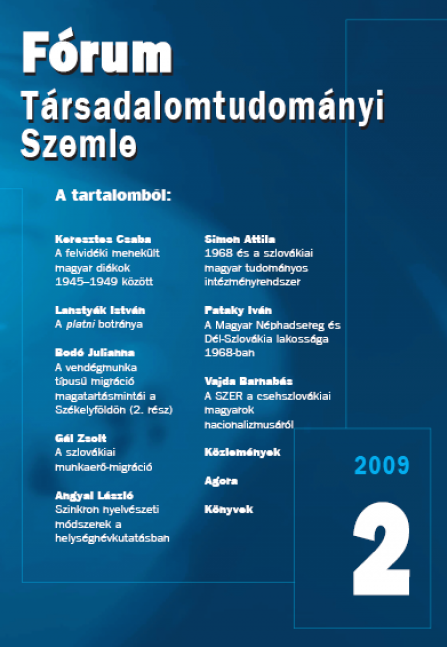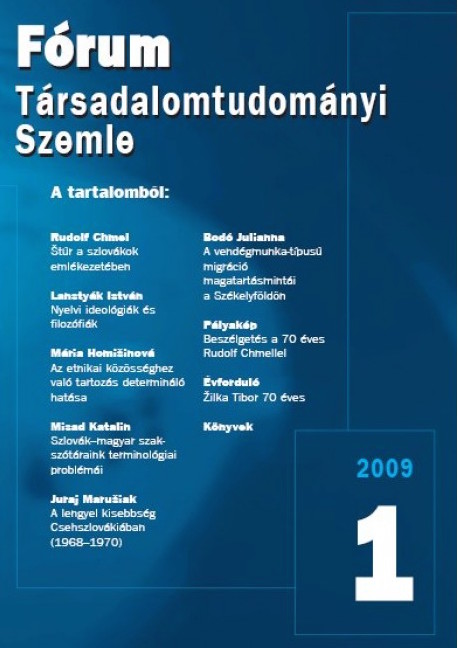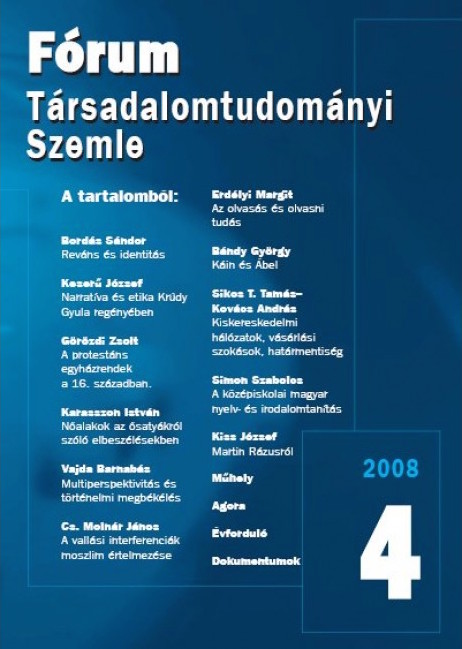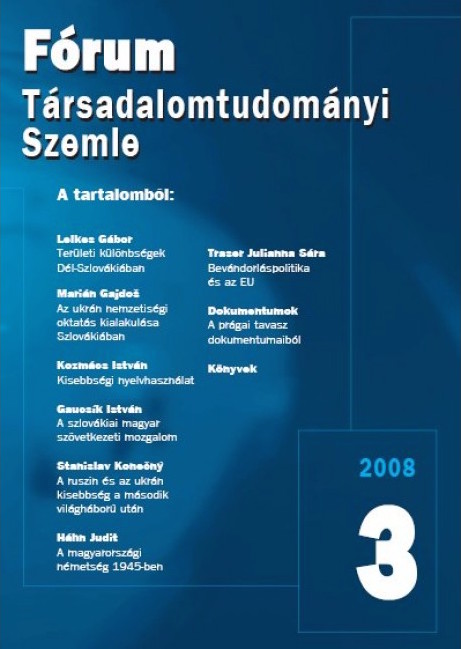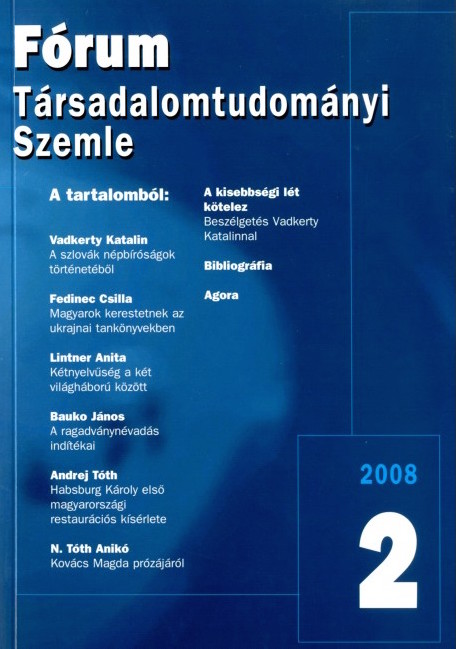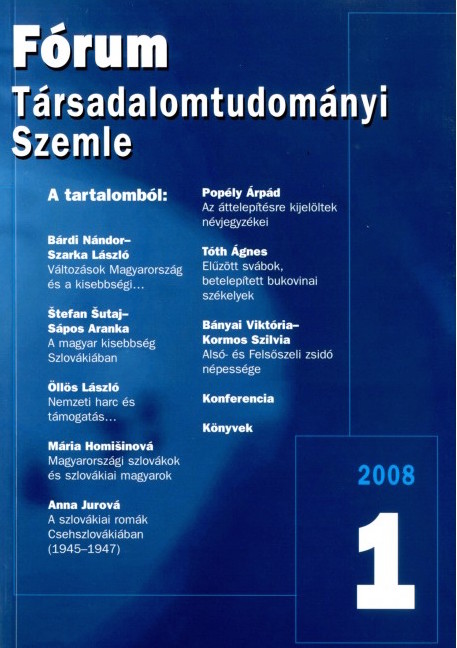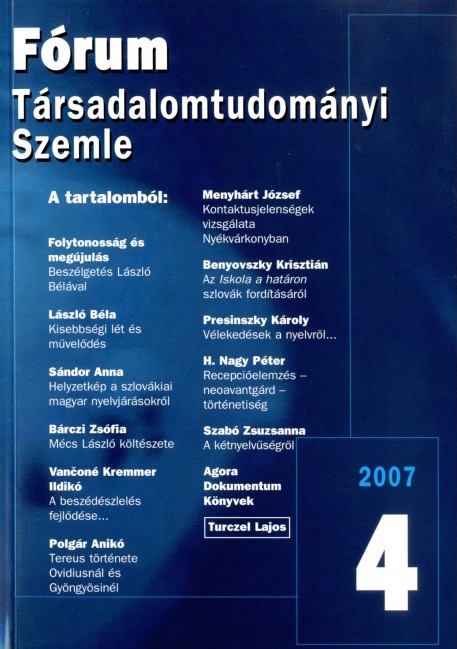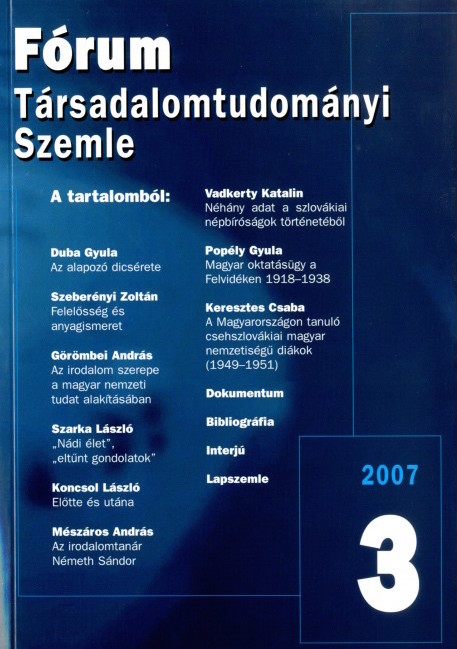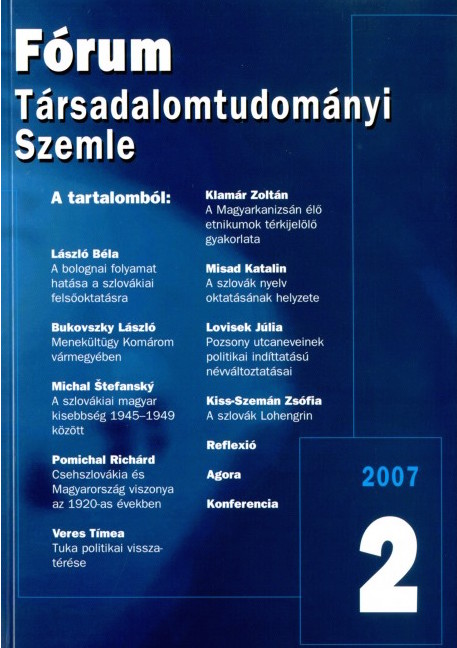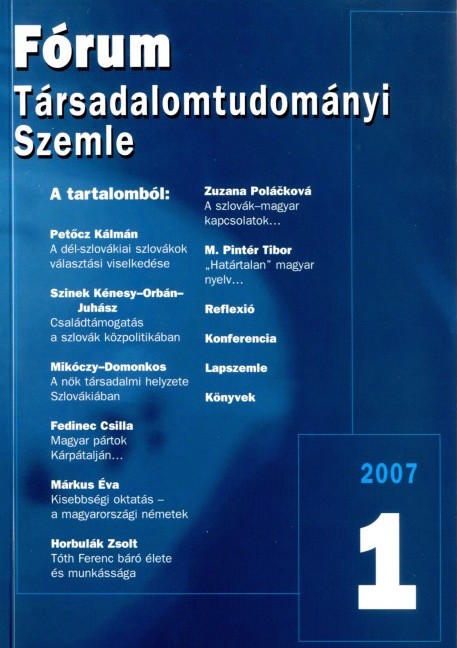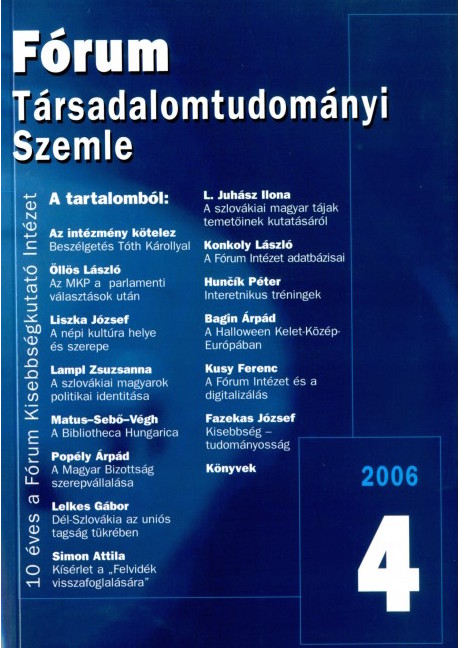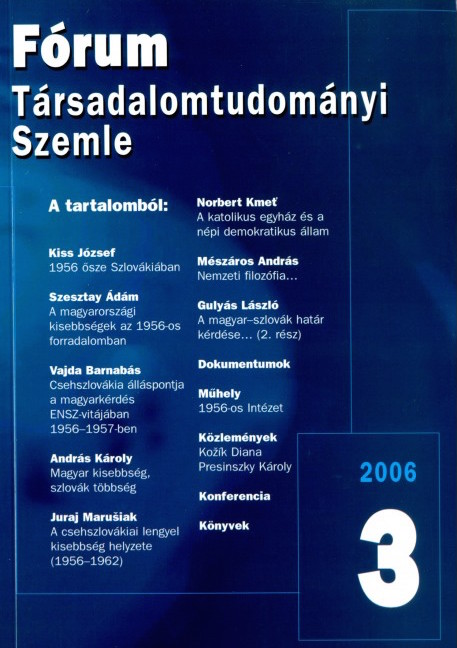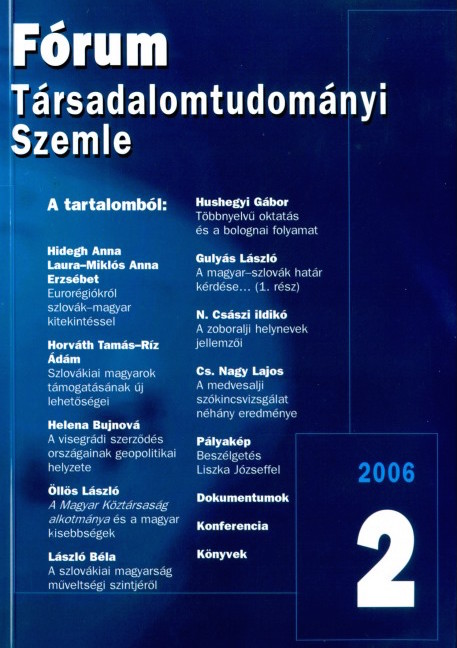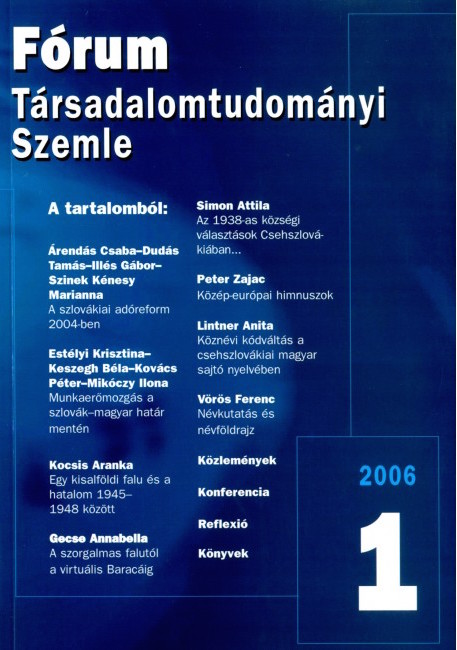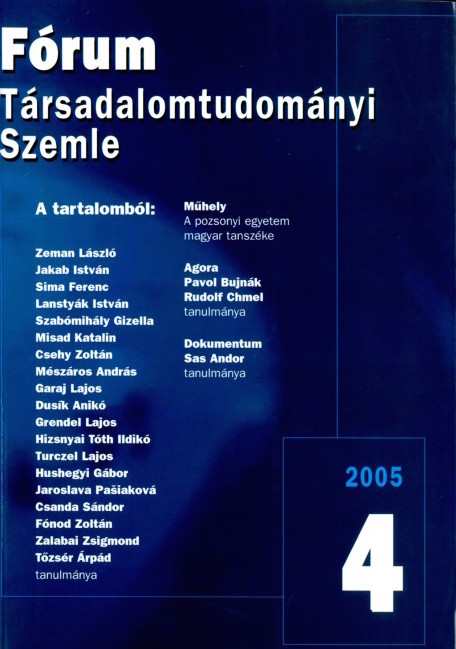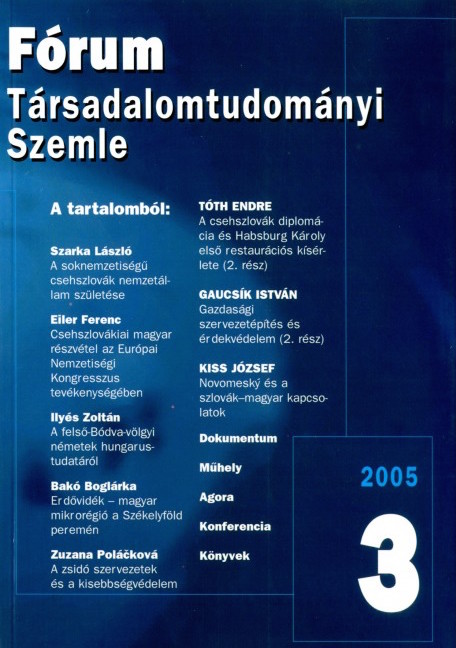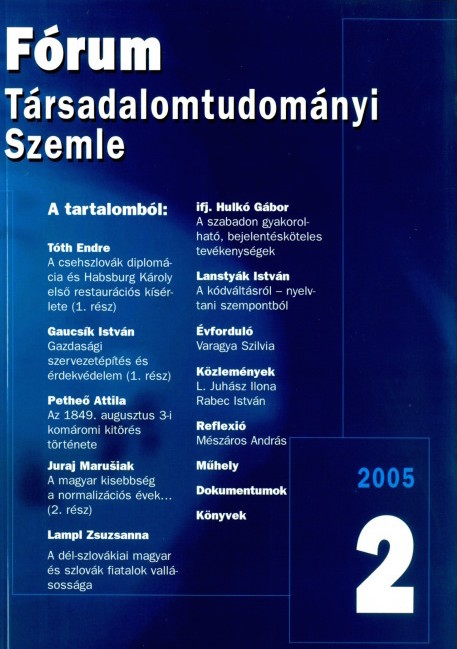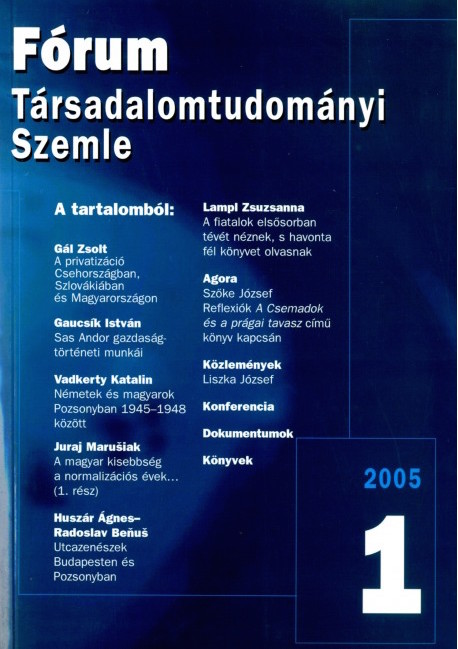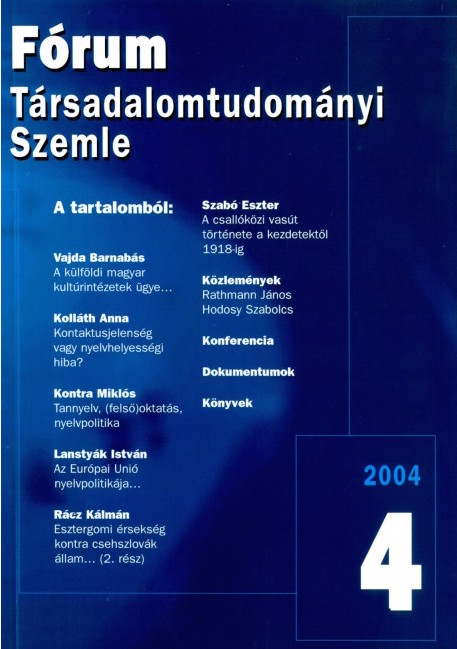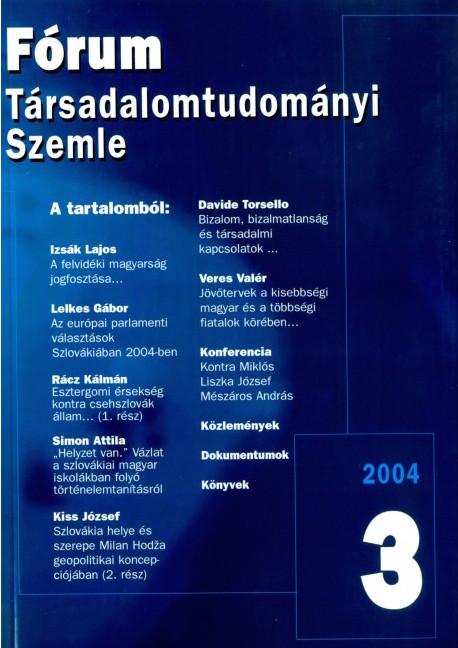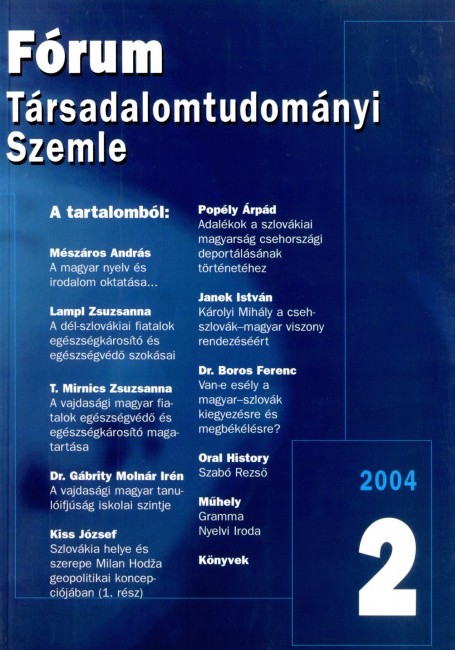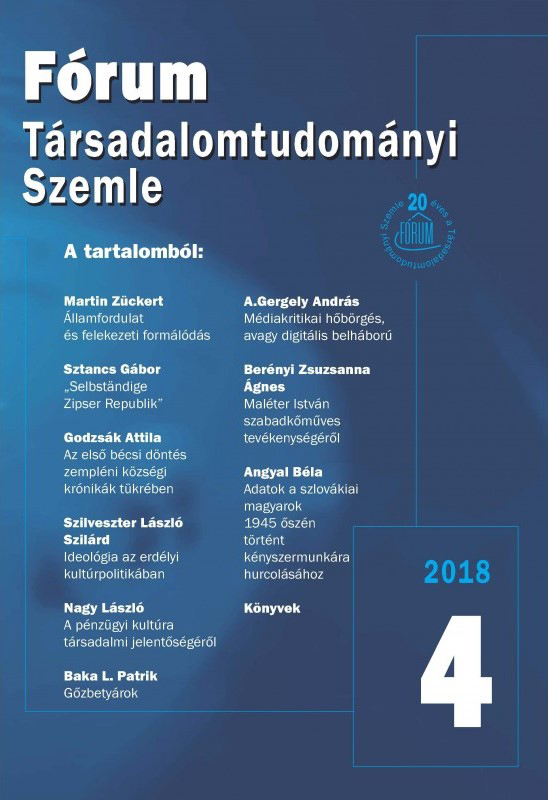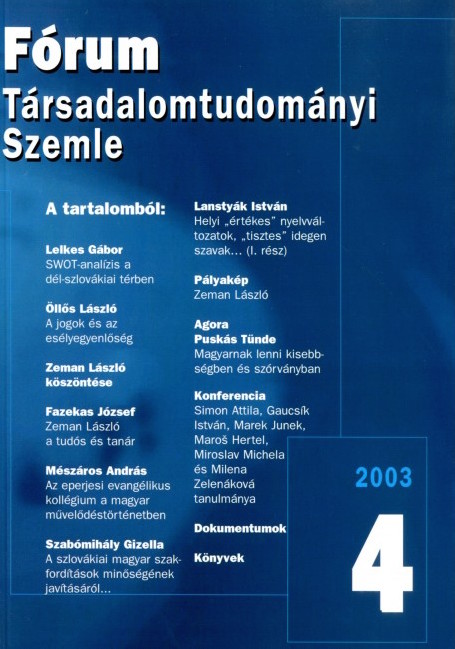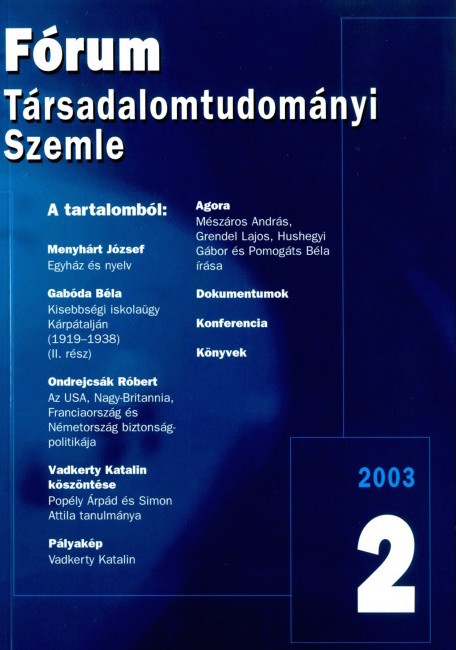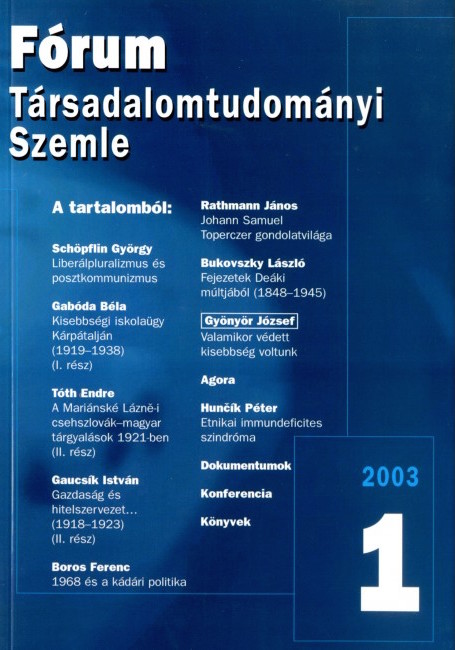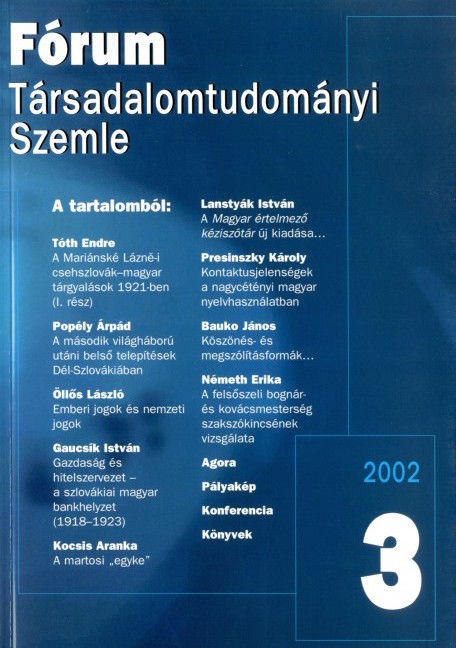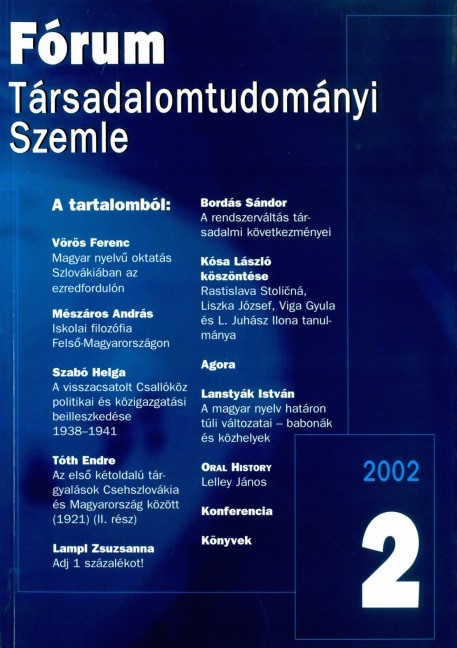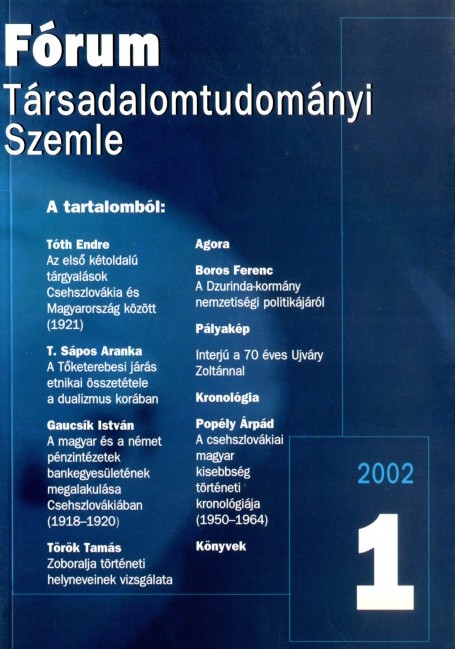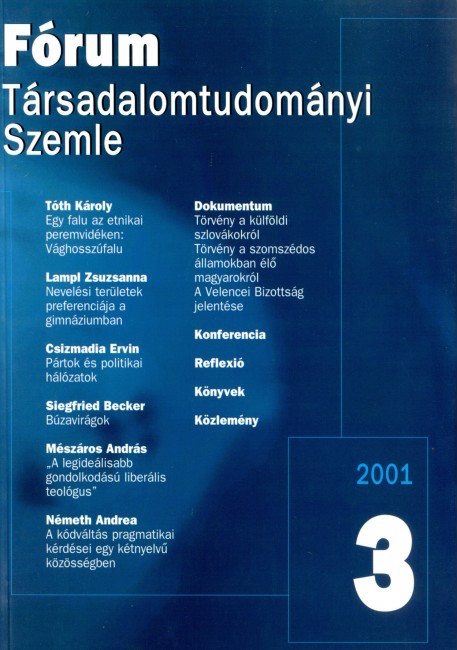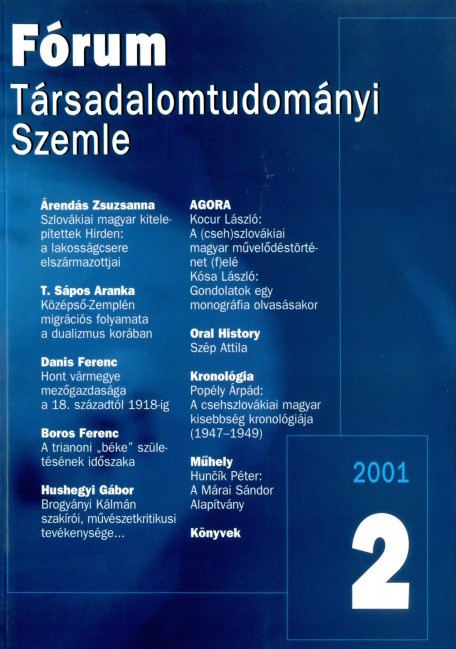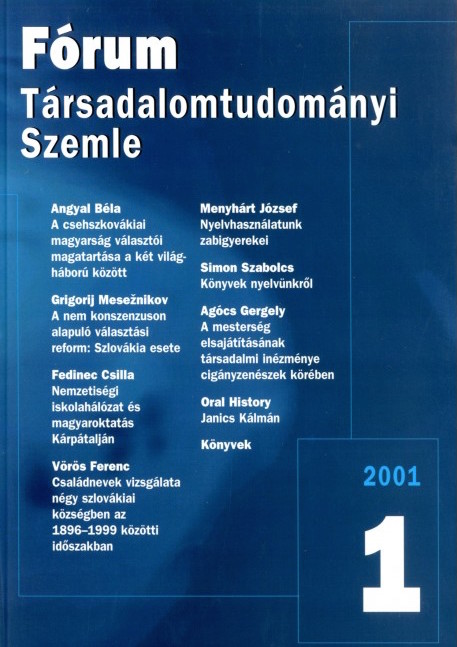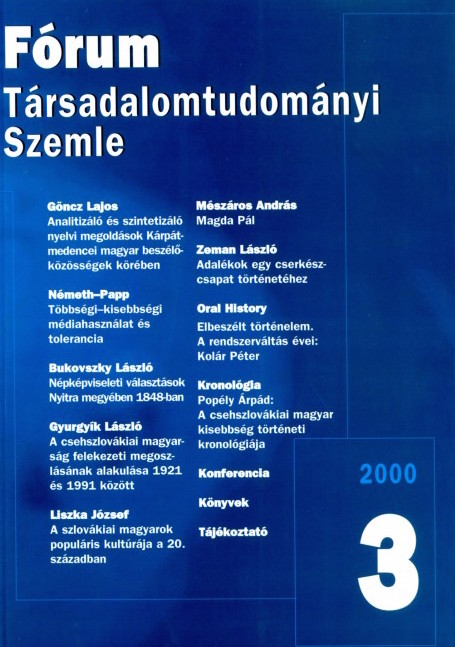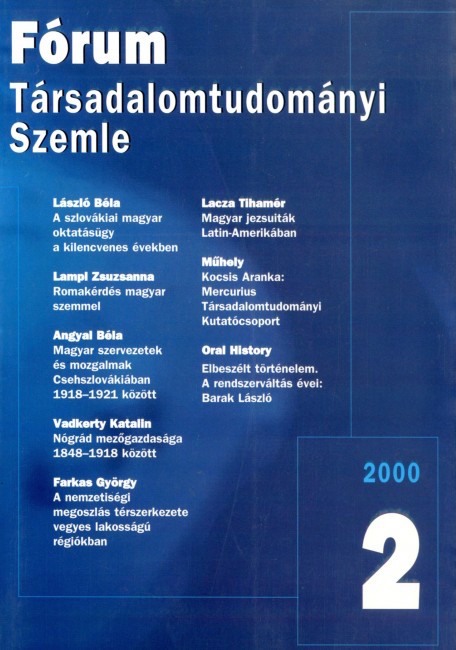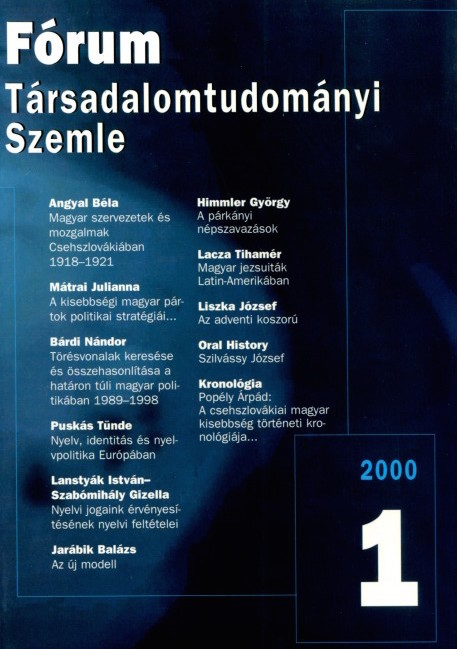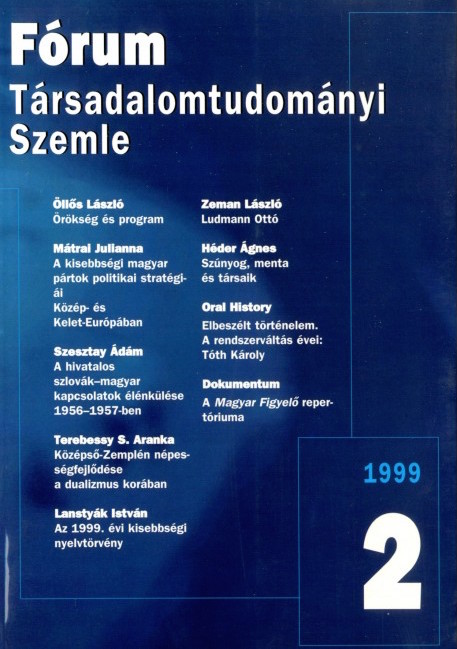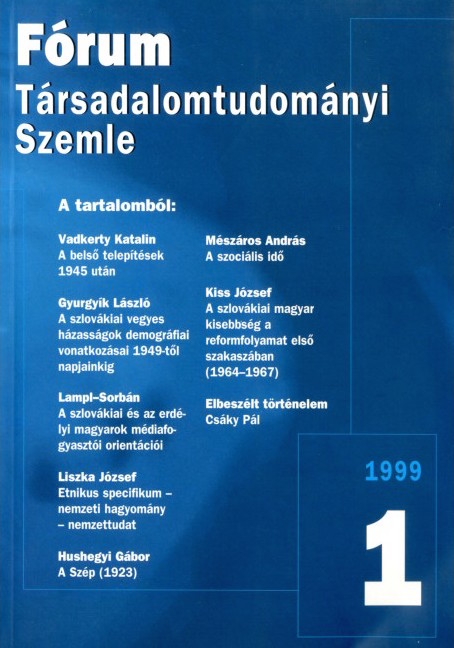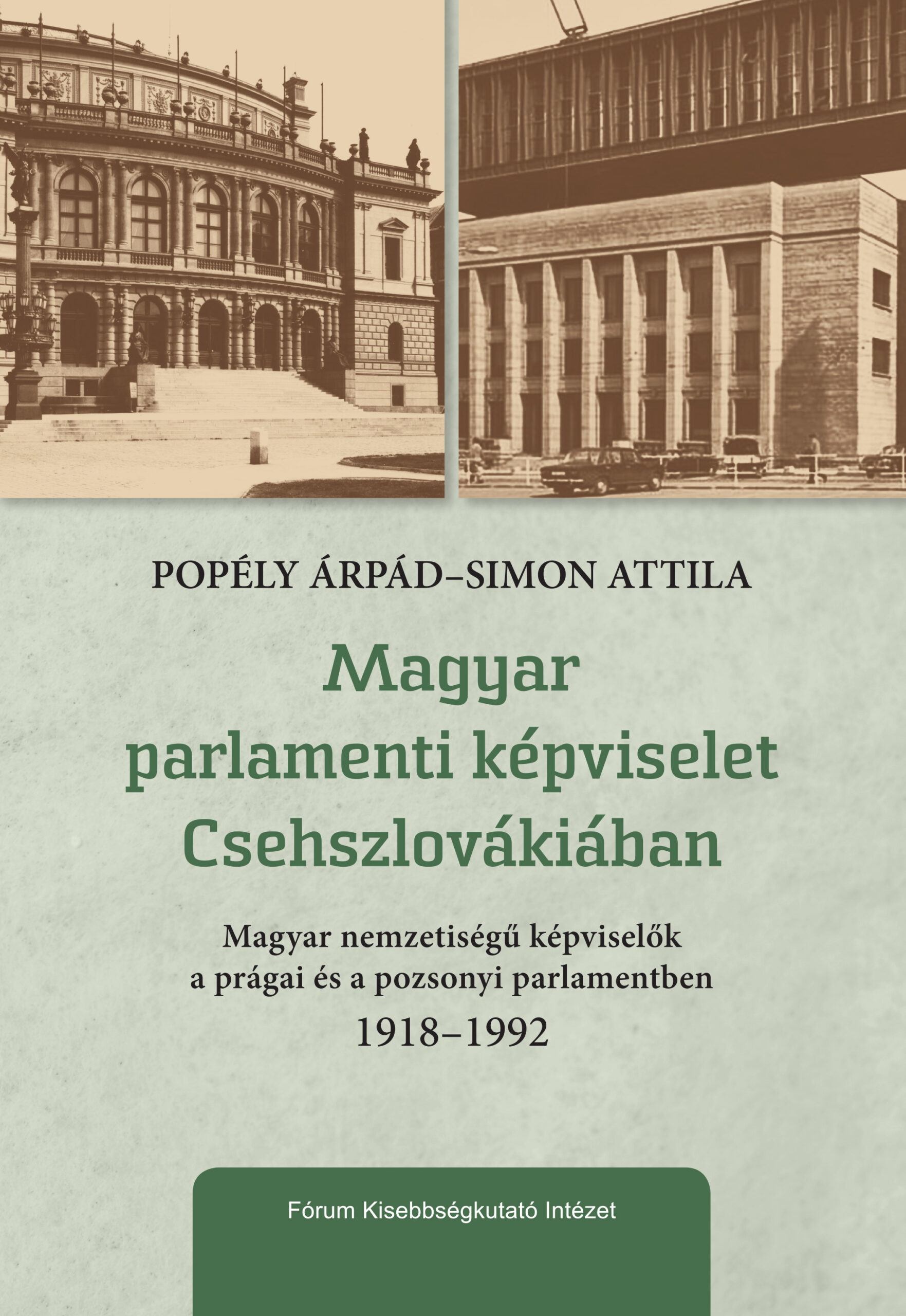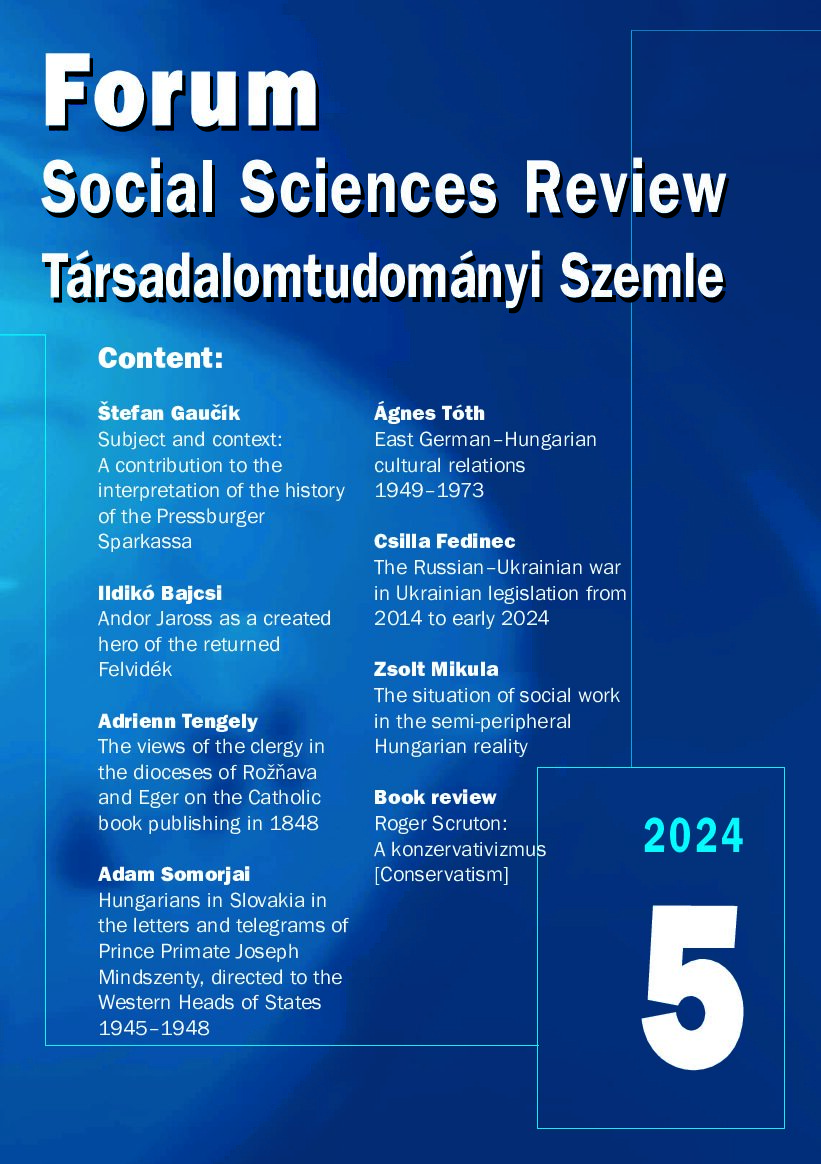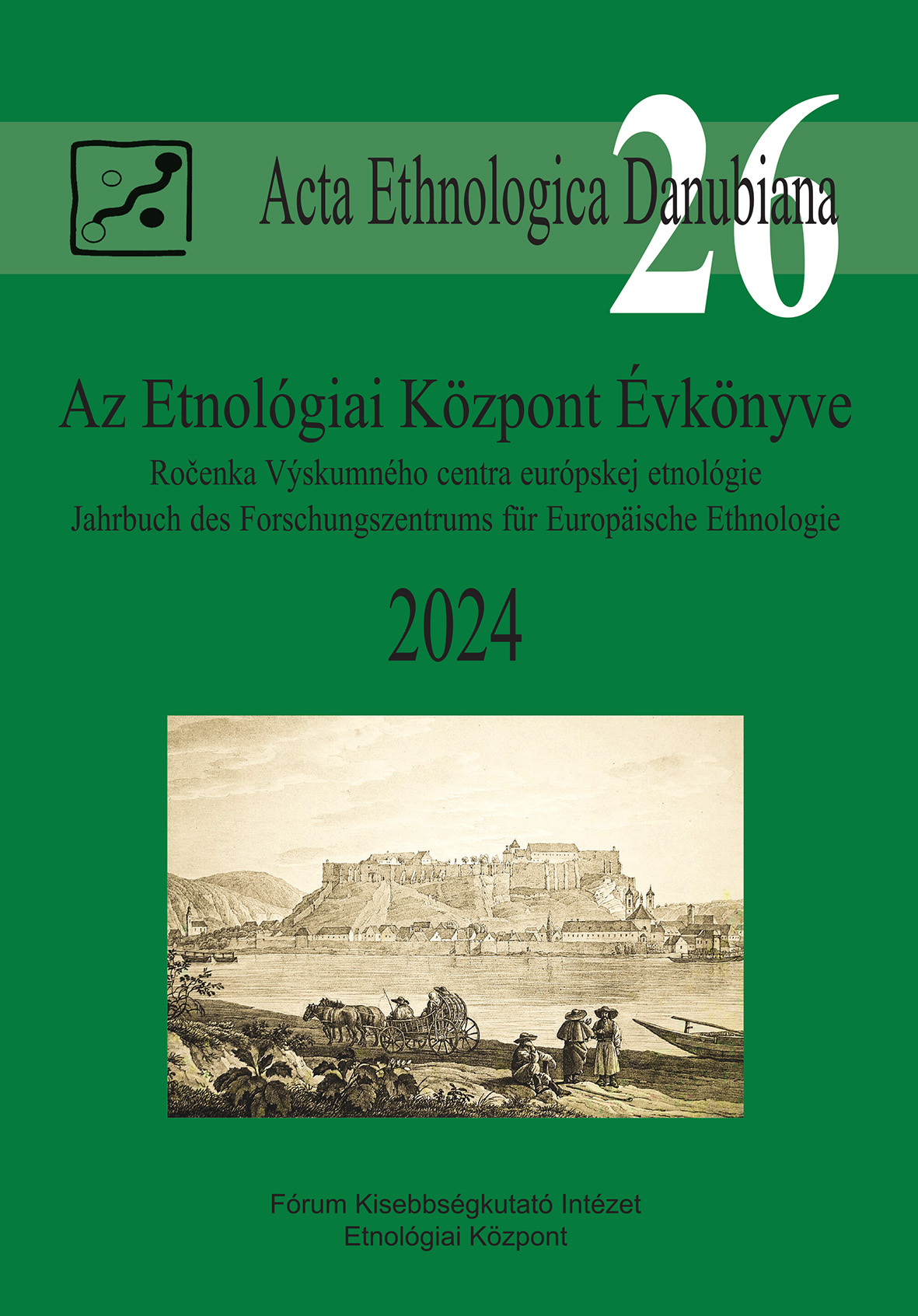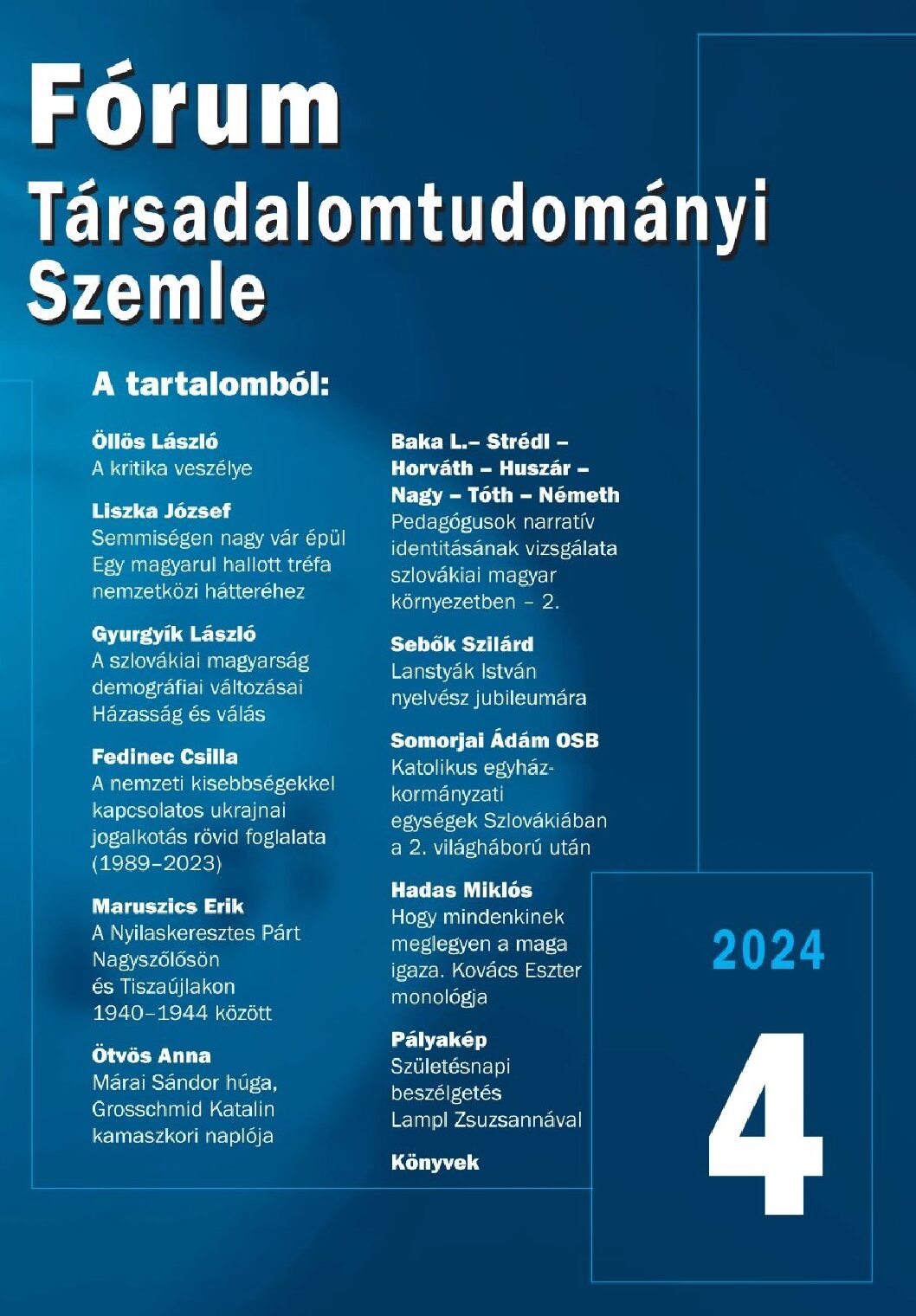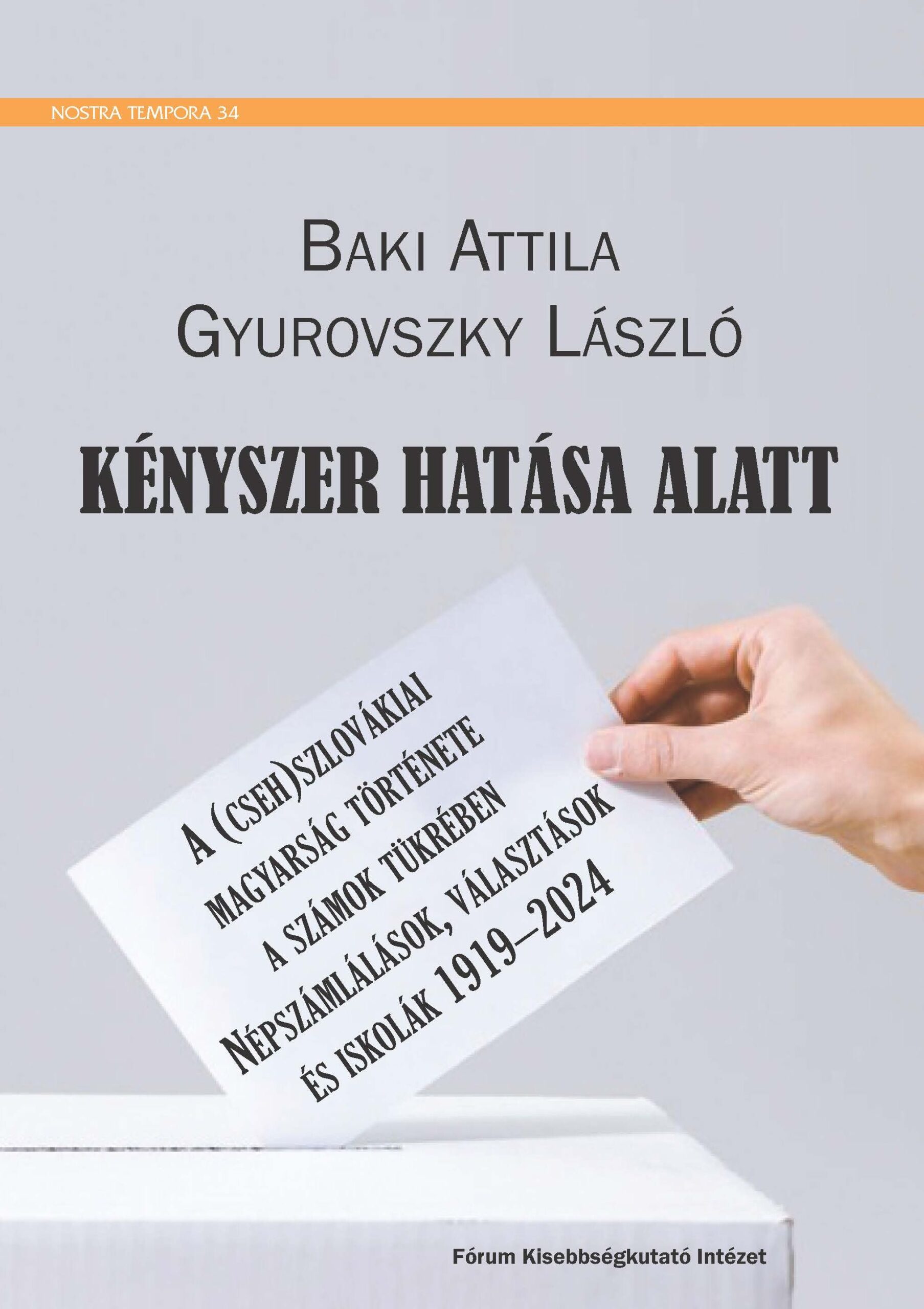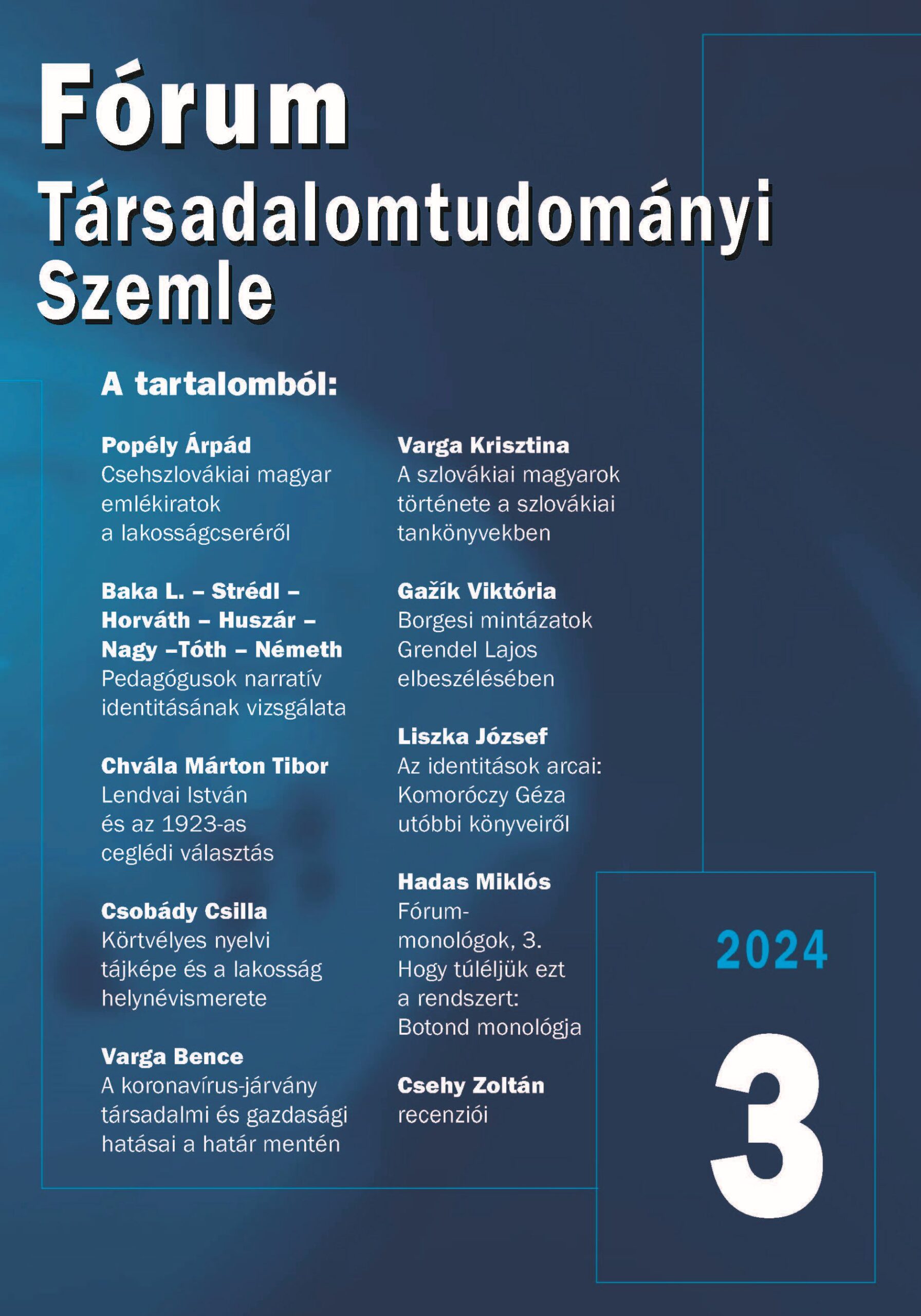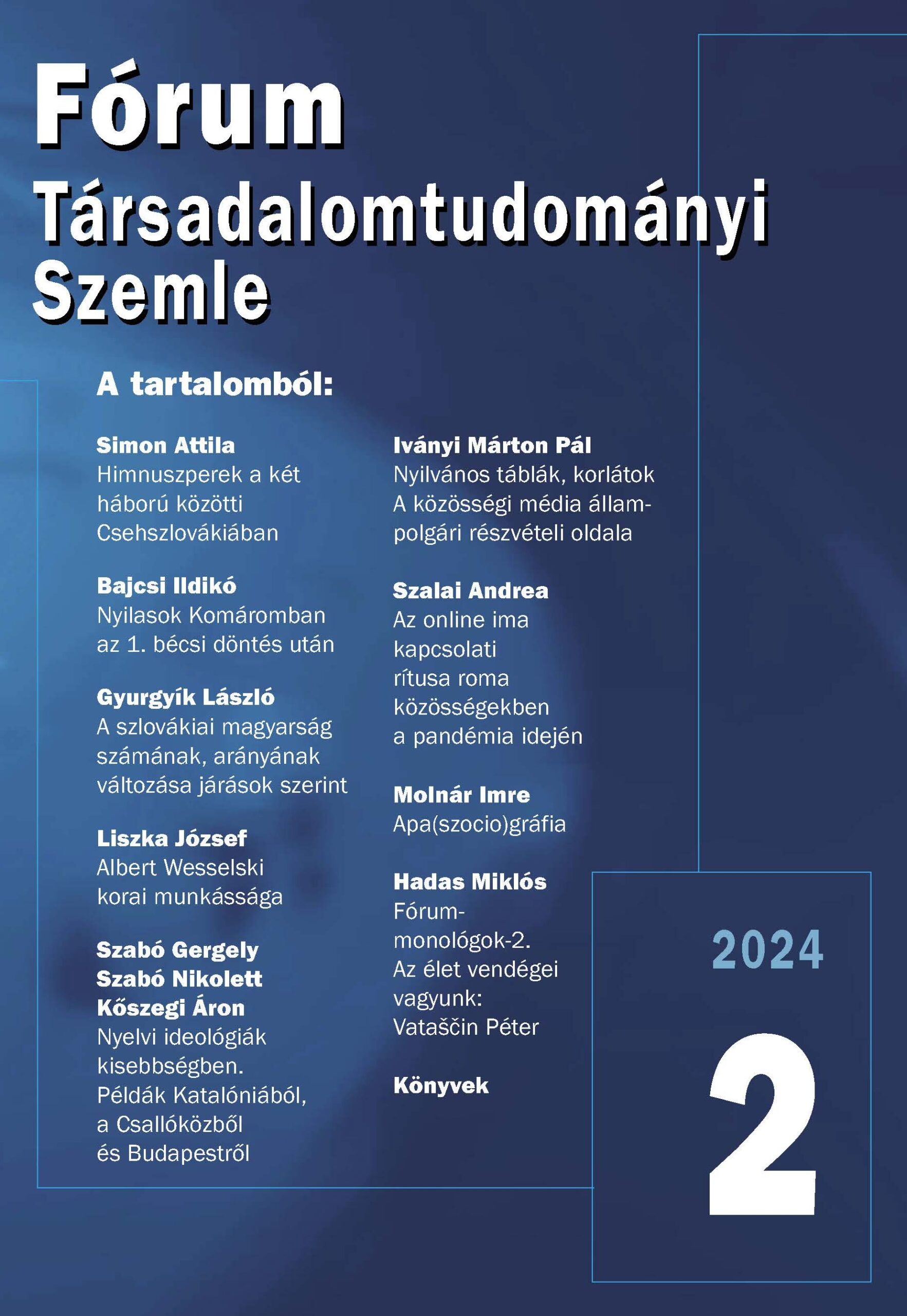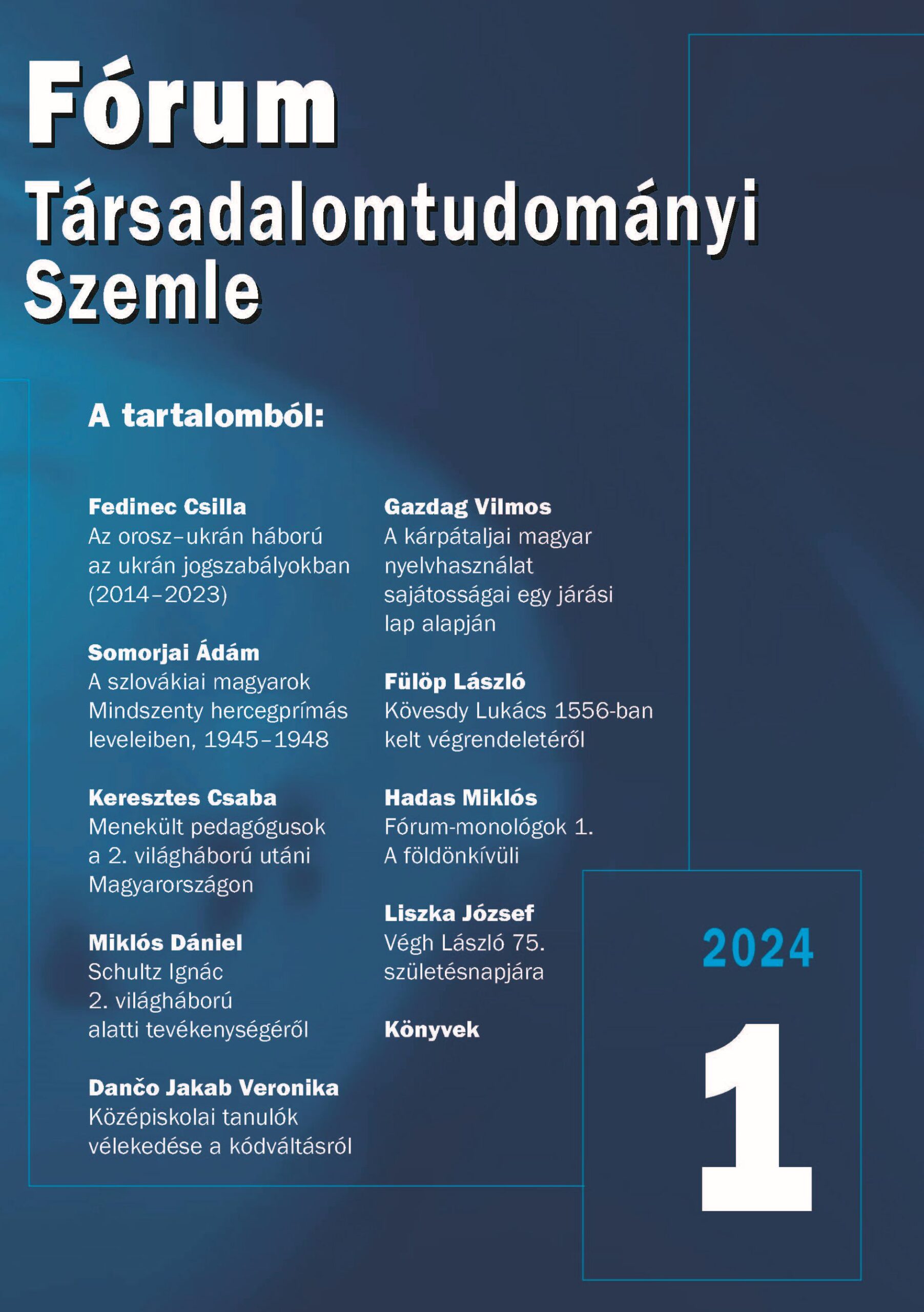Aspects and additional data to the research of the history of cooperatives in Szenc (1905–1948)
In this study I examine the circumstances of the foundation and further development of cooperatives in Szenc in the beginning of the 20th century within three periods of cooperative systems. The first one is the institutionalization of cooperatives evolving from urban and rural cooperatives in the paving years of dualism, especially in the last two decades of the 19th century. The second period is constituted of the Czechoslovak, respectively Slovak cooperative structure between the two world wars, and the short Hungarian period of 1938–1945. In the third period of 1945–1948 reintegration of cooperatives took place and a homogenized superstructure was created, again based on national aspects, and the final liquidation of the respective cooperatives was performed as well. Years indicated in the title of this study are only informative, as the history of the cooperatives of Szenc must be discussed in a broader time range. In this field of interpretation both the processes before 1905 and those after 1945 must be flashed on. This study may, perhaps, provide new approaches to the missing social history of Szenc, and in the near future it can launch a professionally and methodically better founded, long-term research of the history of the commonage and the town itself as well.
István Gaucsík 338.2(437.6)”1905/1948”
Aspects and additional data to the research of the history 94(437.6)”1905/1948”
of cooperatives in Szenc (1905–1948)
Keywords: Cooperatives in Szenc at the first half of the 20th century. The historical–economical background of the commonage in Szenc. The Credit Cooperative in Szenc. The Consumer Cooperative in Szenc. The Hanza Commodity Centre. Alajos Károly (1864–1942).
Hungarian reparations to be paid to Czechoslovakia (1945–1949)
This study examines Hungary´s obligation for reparations after World War II. The number of works devoted to the research of reparations has earlier been rather few and were focused first of all to its Soviet relation, therefore, the objective of this study is to provide deeper information based on primary archival resources on the process of the negotiations with Czechoslovakia, the strategy of the participating parties and their political–economical interests. Hungary after World War II was obliged to pay reparations to its neighbours in the total amount of 300 million American dollars, 200 millions of which was supposed to be paid to the Soviet Union, 70 millions to Yugoslavia and 30 millions to Czechoslovakia. On the obligation to pay preparations there was already a mentioning in the armistice agreement signed in January 1945, but the negotiations were delayed for long, an agreement was achieved in a relatively short time, in June 1945, only with the Soviet Union. The other two states had to wait until spring 1945. The agreement was delayed for differences both of political and economic nature. In case of Czechoslovakia, there was an especially sharp conflict because of the deportation of the population and the related restitutions issues (costs of the deportation, fate of the various assets, political rights of the remaining Hungarian minority). But it was not of a less importance that the huge debt against the Soviet Union amounting 200 million dollars alone ruined the Hungarian economy still not fully recovered from the damages caused by the war.
Péter Gábor 94(100)”1939/1945”
Hungarian reparations to be paid to Czechoslovakia (1945–1949) 355.48(100)”1939/1945”
347.426(437)”1945/1949”
Keywords: Products required by Czechoslovakia and their yearly quantity, products considered by the Hungarian side for possible to provide, and their quantity. Reparations. Sugar compensation. Goods turnover. Alexander Kunoši, Dalibor Krno.
The attempt for revision of the settlement policy of the first Czechoslovak Republic in Transcarpathia between 1938 and 1944
The Hungarian government on the reclaimed territory failed to revise the land reform and settlement policy carried out by the first Czechoslovak Republic. One of the reasons of this was that the changes going on in the region in the Czechoslovak era required sensitive and patient policies on part of the Hungarian leadership. In connection with the agricultural policy of the region, rather than the change of the land tenure system, working opportunities were most important to be provided for the Ruthenian population. The effectiveness of the measures to be taken was made difficult by the fact that the person of the chief organizer of the land reform changed frequently. The implementation of the revision was detained most of all by the policy of the Hungarian government towards the Ruthenians: as Ruthenians belonged among the beneficiaries during the deportations in the Czechoslovak times, significant part of the population of the settlers villages were Ruthenians, and the liquidation of these property acquisitions, as well as the sudden weakening of the economic positions of the Greek-Catholic church, which were strengthened among the Ruthenians in the Czechoslovak era, would have jeopardized the reintegration of Transcarpathia to the ties of the Hungarian Kingdom. Autonomy concepts connected with Transcarpathia and the fact that the Hungarian government would have been pleased to see Ruthenians among the eastern Slavonic nations as an independent one loyal to the Hungarians, tells about the long-term consolidation plans of the Hungarian government. The changed socio–political relations of Transcarpathia would not have coped with a rapid transformation in the tensed medium of the foreign policy. History though did not give a chance to the run-out of such a long-term policy, the war prevented any further experimentation. Therefore, the land tenure reform and the revision of the settlement policy was unsuccessful, and the Ruthenian settlers villages became after 1945 scene of the new settlement policy of the Soviet power.
Imre Szakál 341.61:341.221
The attempt for revision of the settlement policy of the first Czechoslovak 341.222(437.6+477.87)
Republic in Transcarpathia between 1938 and 1944 314.745.4(477.87)
94(477.87)”1938/1944”
Keywords: Transcarpathia after the Vienna Arbitrage. Hungarian revisionist visions in the settlement policy in the former Czechoslovak era. Hungarians, Ruthenians and relocated “aliens” in Transcarpathia.
The formation and re-enterpretation of the “mythology” of the Hungarian Conquest Memorial in Verecke in the light of in-depth interviews
The topic of this essay is the Verecke memorial, which has become a community symbol of Hungarians in Ukraine. The Verecke mountain-pass – the first “station point” of the conqueror Hungarians in the Carpathian Basin – became part of public awareness and an attribute of the Hungarian landtaking, in connection with the ceremonies of the Millenium. In 1995, when the question of the rebuilding of the Verecke memorial was raised, the Ukrainian state had only celebrated the 4th anniversary of its independence. As good-neighbourly relations with Hungary had been developing since 1991, the Ukrainian state at first reacted on the raised idea positively. But later, the construction works were suspended and the inauguration of the memorial did not go smooth either, partly for the national antipathies of the Ukrainian partner, partly for the different visions of the divided Hungarian political representation in Ukraine. We follow the views of the Hungarian minority on the memorial from the beginning of its construction in 1996 until its inauguration in 2008. The memorial has been in the centre of attention as one of the sensitive issues and source of a potential conflict between Ukraine and Hungary, as well as the Hungarian–Hungarian political relations representing local interests, and as such, has become a constant topic in the regional Ukrainian and Hungarian press.
László Túri 94(439)
The formation and re-enterpretation of the “mythology” of the Hungarian 94(477.87)
Conquest Memorial in Verecke in the light of in-depth interviews 725.94(477.87)
Keywords: The Verecke memorial. Hungarian–Ukrainian and Hungarian–Hungarian relations in Ukraine at the millennium. The stands of the Hungarian politicians and public figures in Ukraine on the memorial.
Sources to the history of national minority teacher trials in Hungary in the beginning of the 20th century
Our source publication presents the papers on the disciplinary proceedings imposed on evangelical teacher of Vázsec (Liptó County) András Paszternák. The process was one of the teachers lawsuits ordered in Liptó County in 1908 and 1909 because of the disciplinary offence defined in §22. of Act XXVII of 1907. The documents published here open up the process of a trial, in the course of which we can witness the fight stemming from the conflicts of interest between the major ecclesiastical authority and the secular power. The superintendent and the public administration committee – in the role of the supreme state authority responsible for local inspection – reacts offensively, while the evangelical church and the teacher takes the defensive role, even if the church stands not that much for the teacher, but for its own autonomy going back several centuries. The church calls the witness of the defence to take a stand in the best interests of the church; arguments based on reality and logic are listed by the accused teacher himself. Nevertheless, the trial ends in victory of the state, indicating that the processes launched within a very short time compared to the conditions defined by the law, just in nine months after entering into force, rather serve the purpose of demonstrating the rigor of the law than its consistent enforcement.
Anikó Antalicz 371(439)(091)
Sources to the history of national minority teacher trials in Hungary 37.014(439)”1907”
in the beginning of the 20th century 94(439)
Keywords: Lex Apponyi. Vázsec. Slovak evangelical elementary school. Requirement of the Hungarian language command. Conviction of teacher András Paszternák.
The attempts of the Mukachevo Diocese to establish an independent Greek-Catholic Archdiocese before the middle of the 19th century
The attempts for advocacy of the Mukachevo Diocese presented themselves in several forms, often combining with efforts for strengthening the Ruthenian national awareness. After the Uzhgorod Union in 1646, this intention was aimed at the reduction of the influence of the bishop of Eger. The dependence from Eger was eliminated by the canonisation of the diocese. The episcopate fell under the authority of the primate of Esztergom. Bishop András Bacsinszky was the one, who first suggested the establishment of the Greek-Catholic Archdiocese, which would have included the Mukachevo diocese as well. Nevertheless, the protests of the Hungarian leading circles crossed these plans. The revolution in 1848 though gave new hope to the Mukachevo diocese keeping good relationship with the Hungarian government. In summer 1848, bishop Vazul Popovics and his chapter expressed his wish to establish the Mukachevo Archdiocese in Hungary, which would have controlled the Greek-Catholic hierarchy in Hungary. The Hungarian Ministry of Culture, however, did not support this endeavour, because of the unfavourable opinions of the Romanian bishops. The situation had not changed after the defeated war of independence either. A church organization independent from Esztergom was provided for the Romanian Greek-Catholics gaining considerable credit in the counter-revolution by the Vienna government.
Ferenc Molnár 282:281
The attempts of the Mukachevo Diocese to establish an independent 281.91(477.87)
Greek-Catholic Archdiocese before the middle of the 19th century 262.3(477.87)
Keywords: The establishment of the Mukachevo Diocese. Attempts to establish a Greek-Catholic Archdiocese. The power rivalry of the Ruthenian and the Romanian Greek-Catholic church in Hungary. András Bacsinszky (1732–1809). Vazul Popovics (Basil, 1796–1864).



